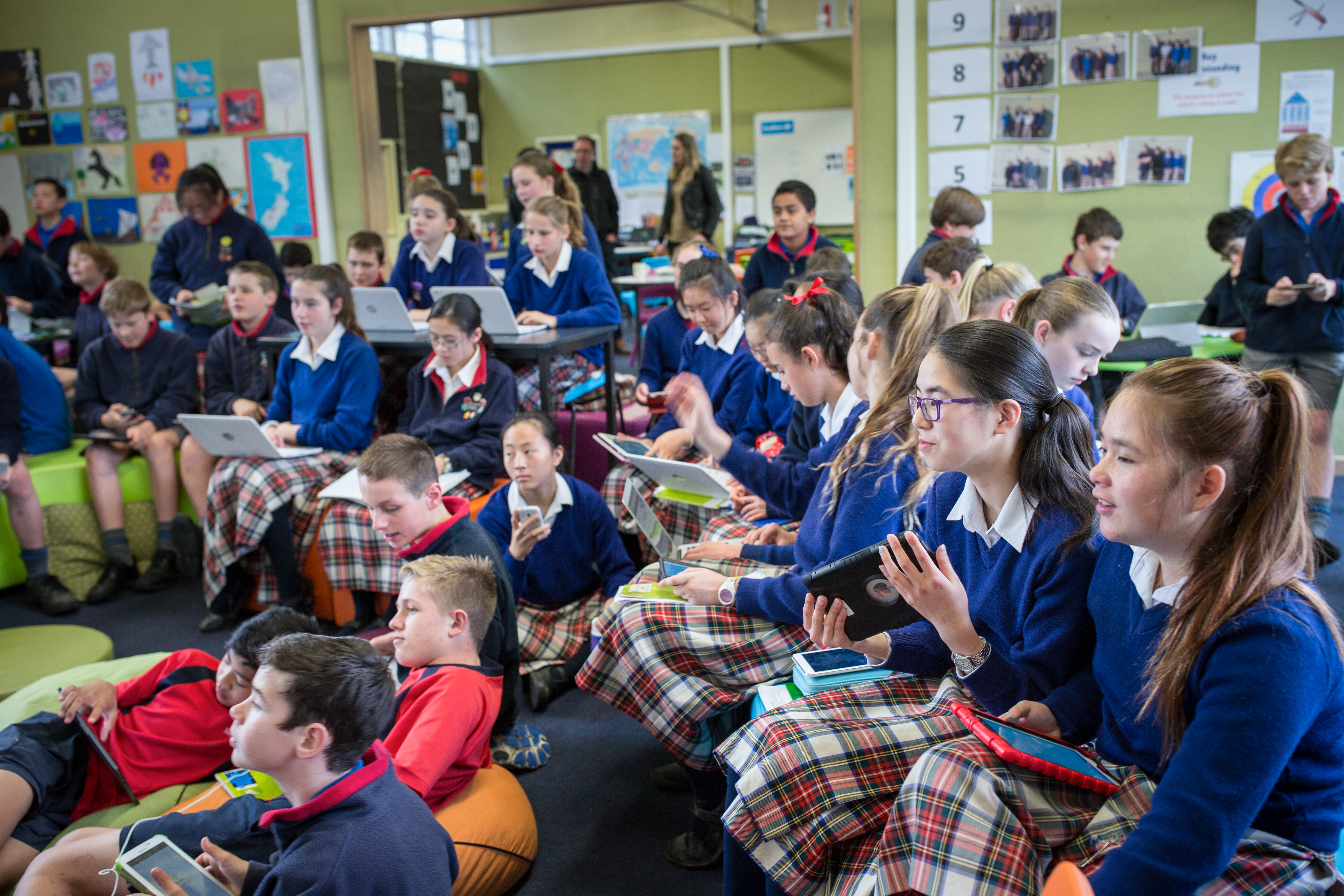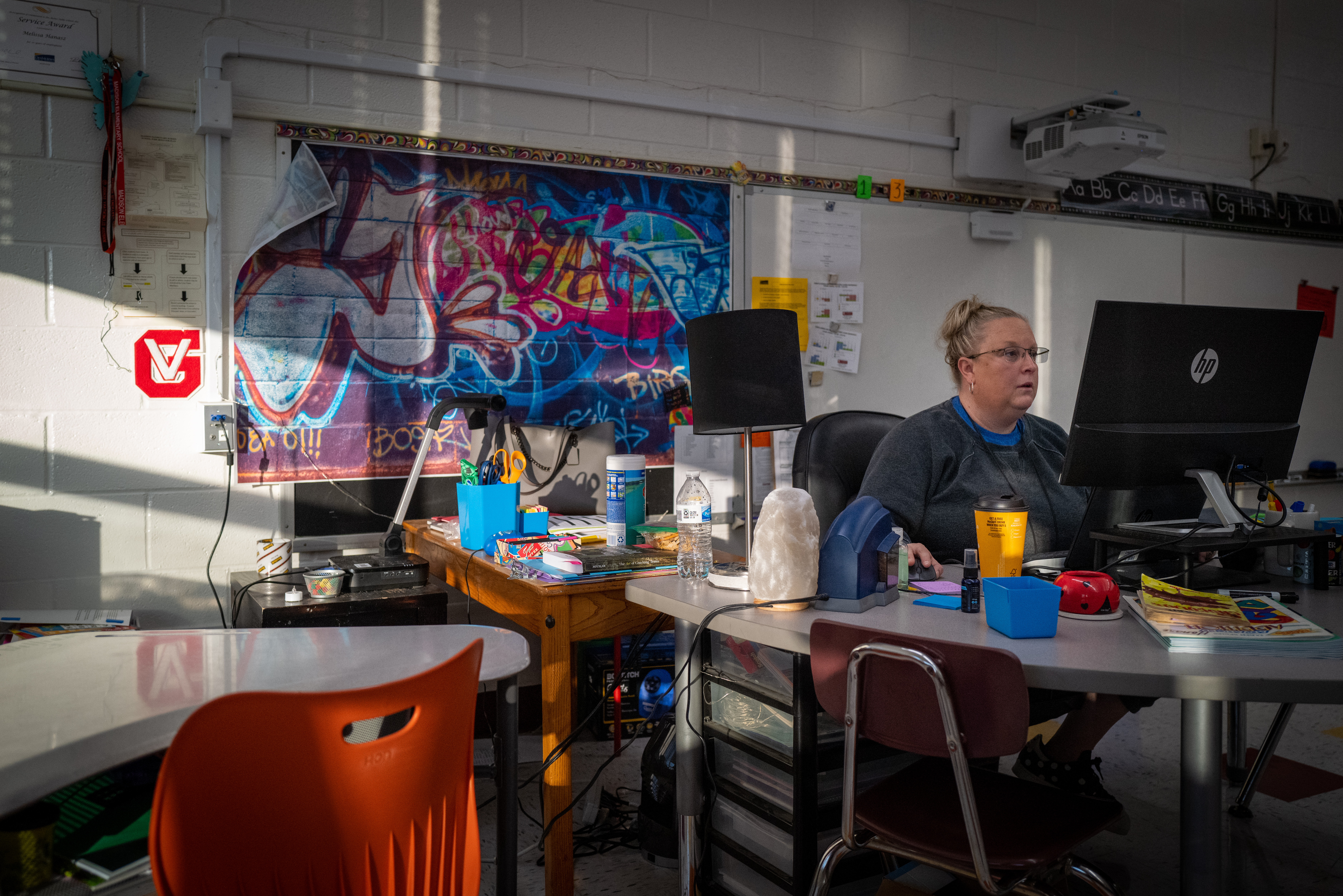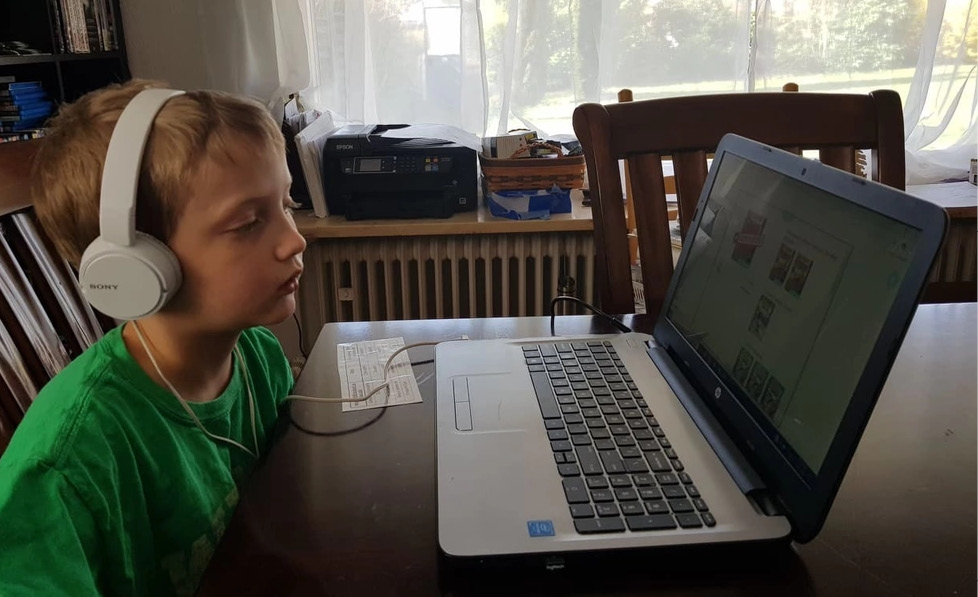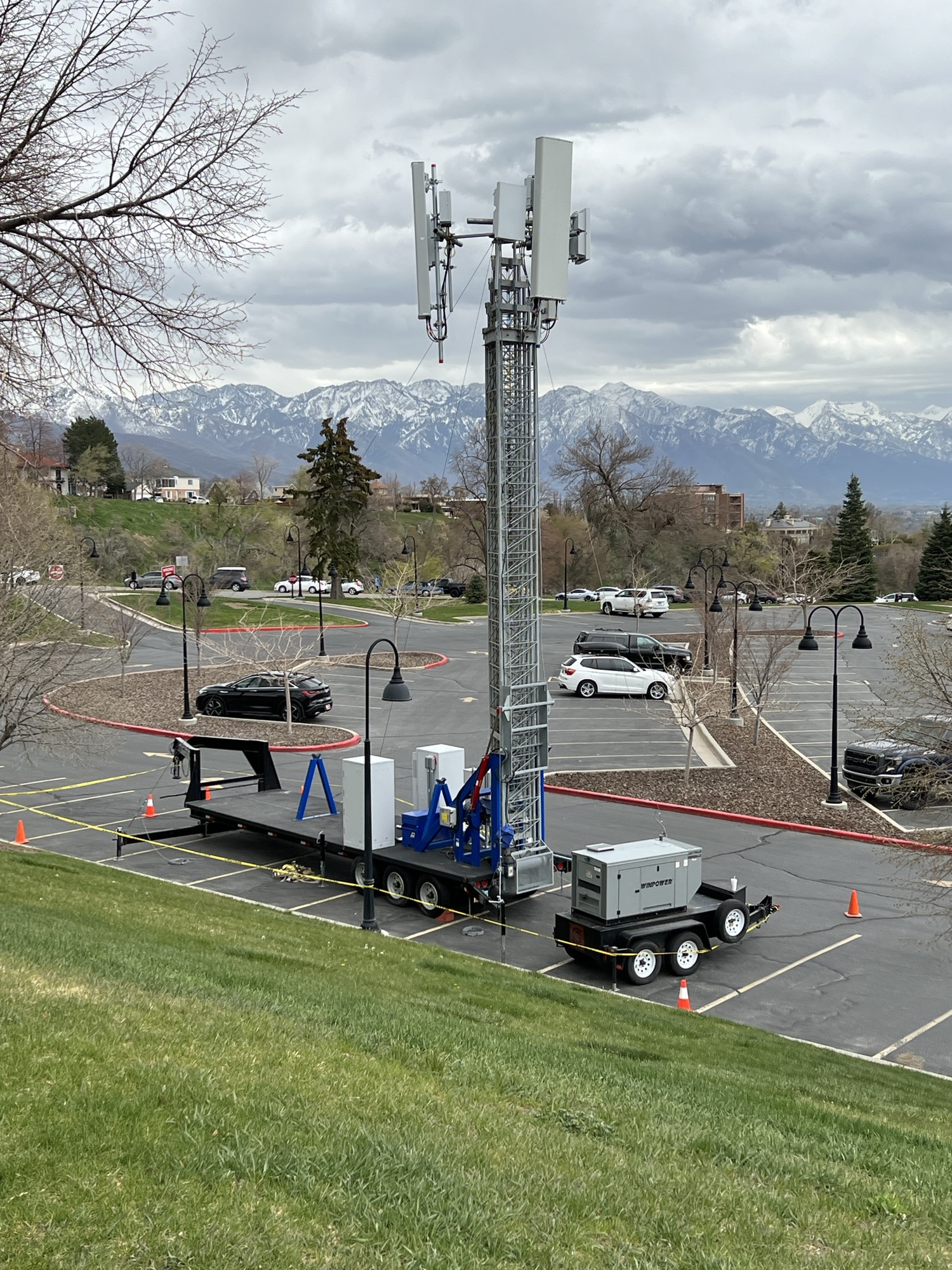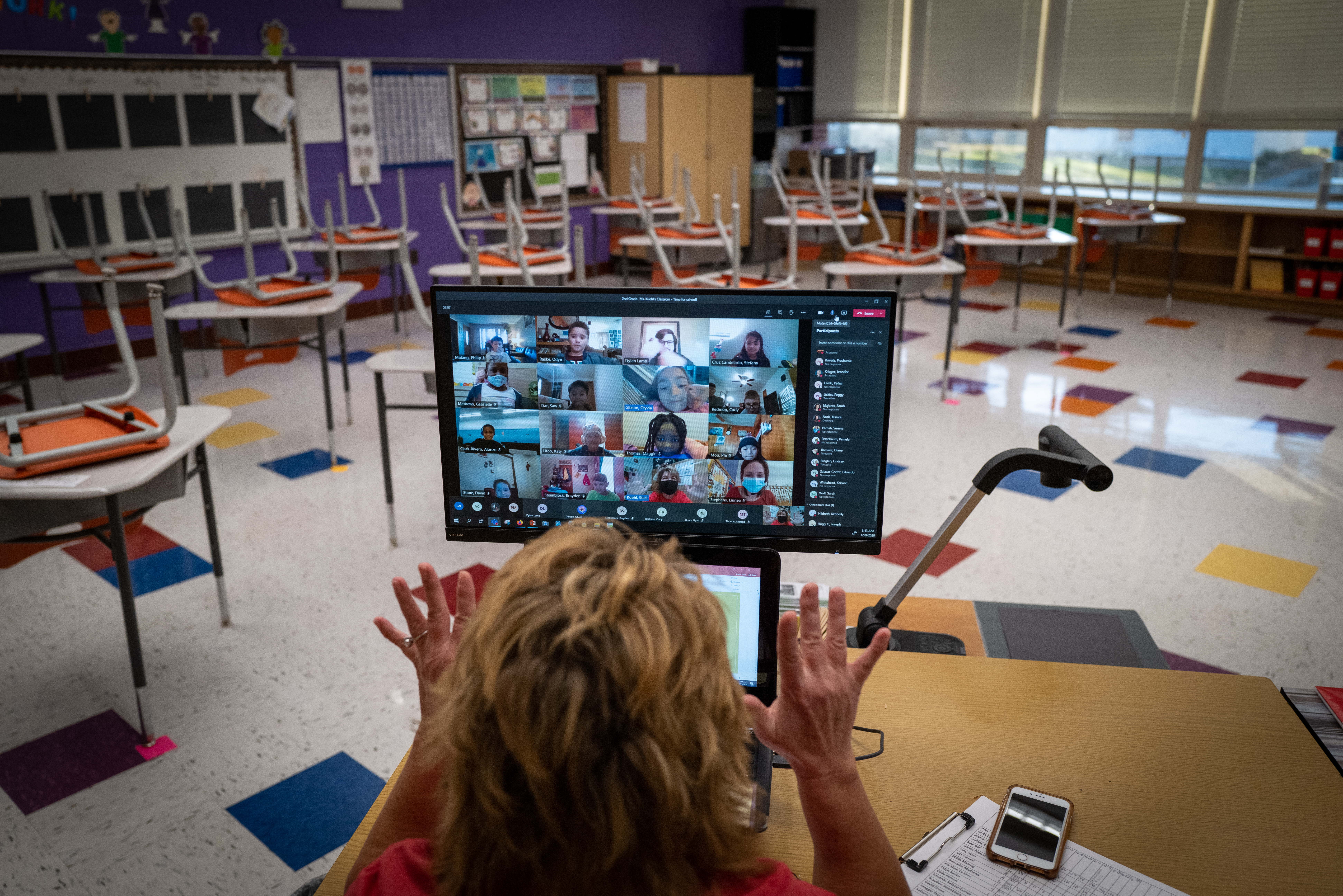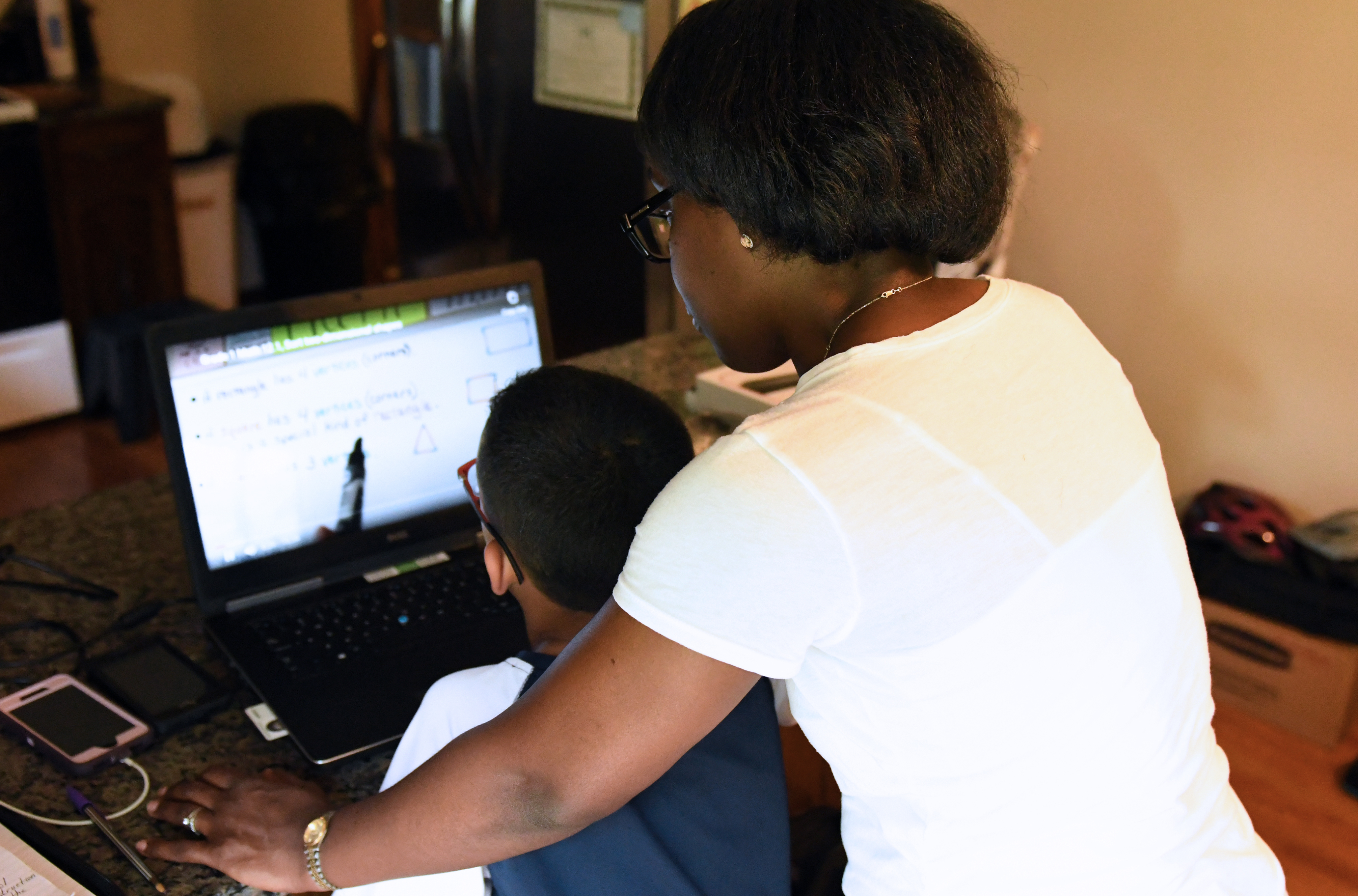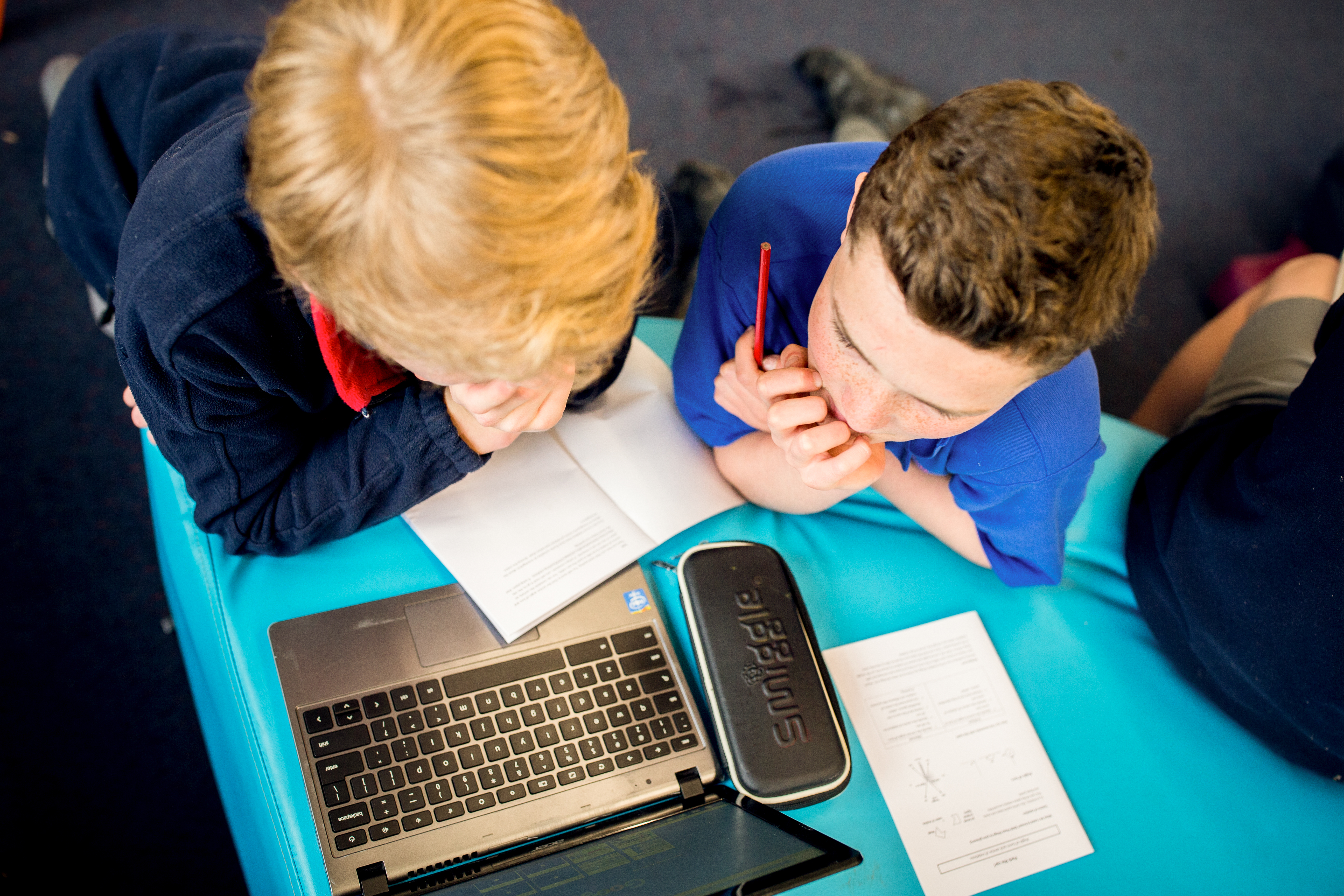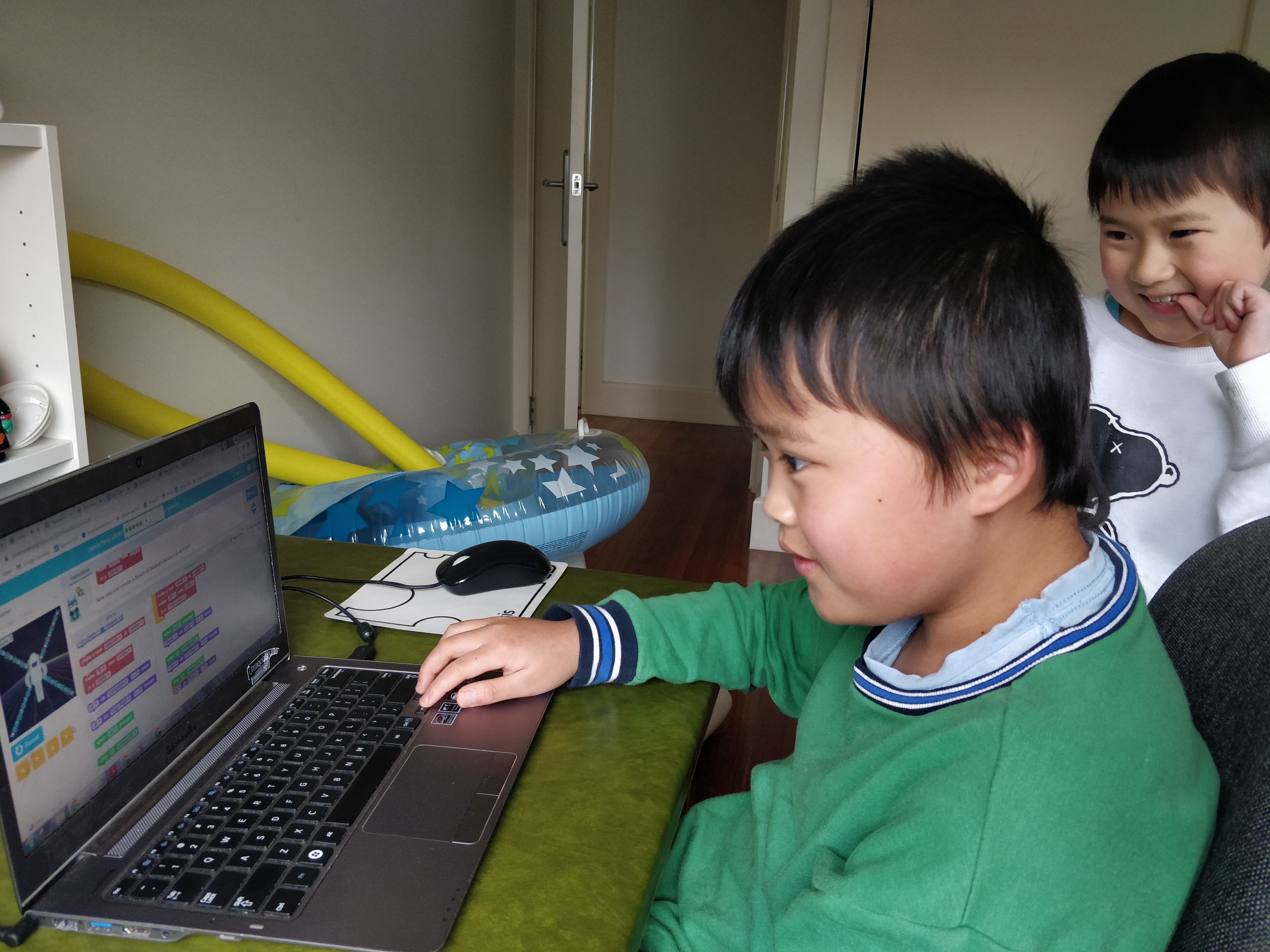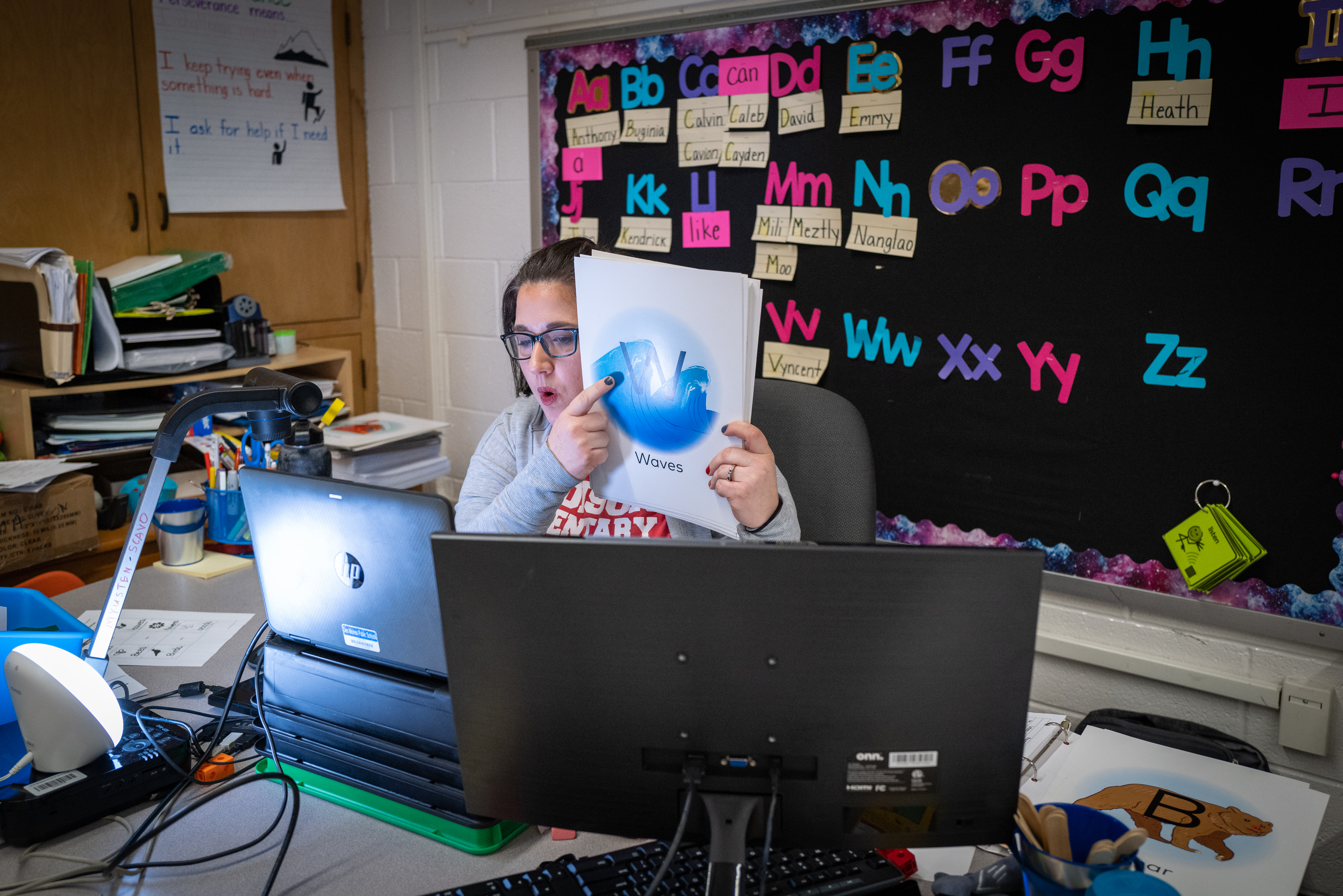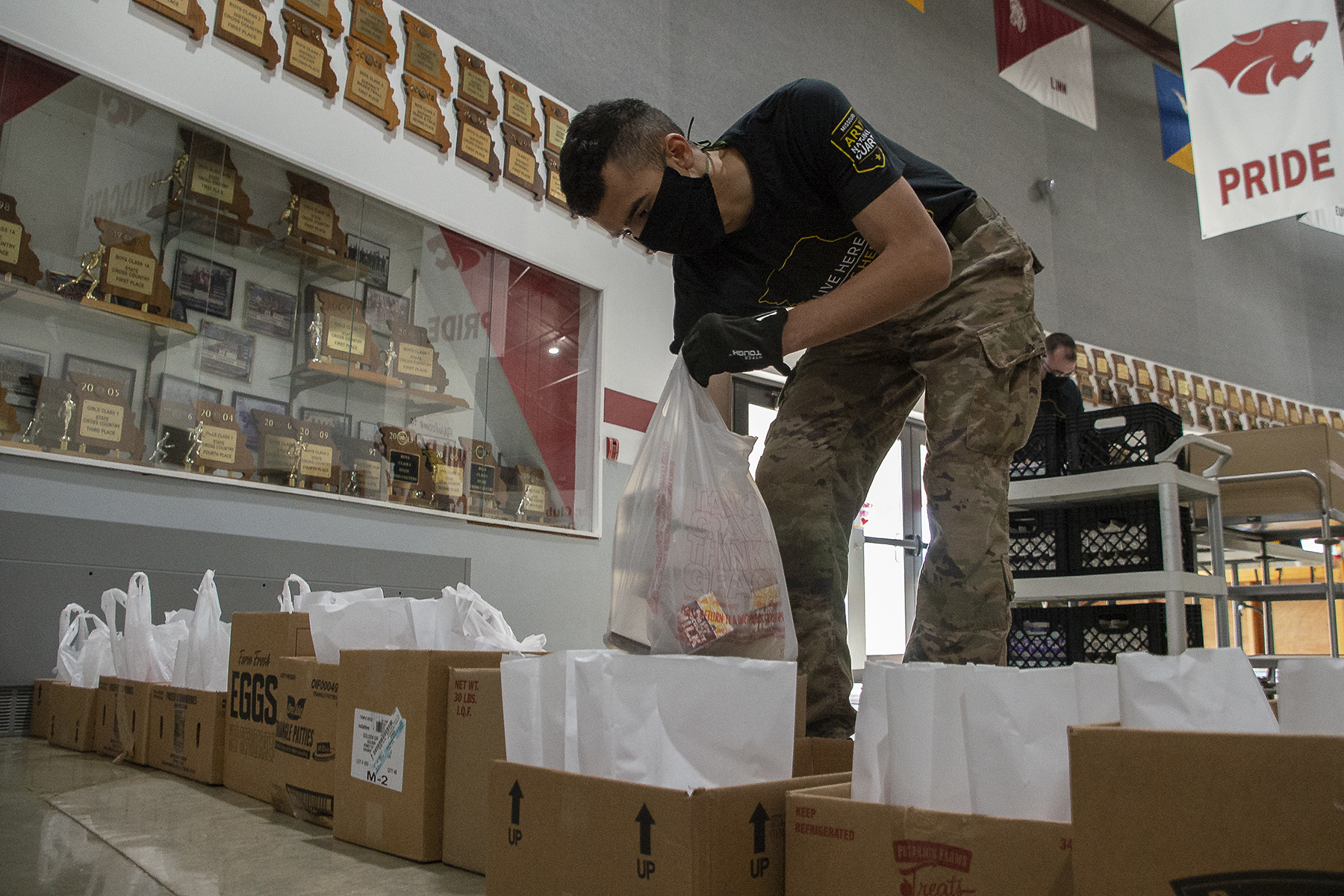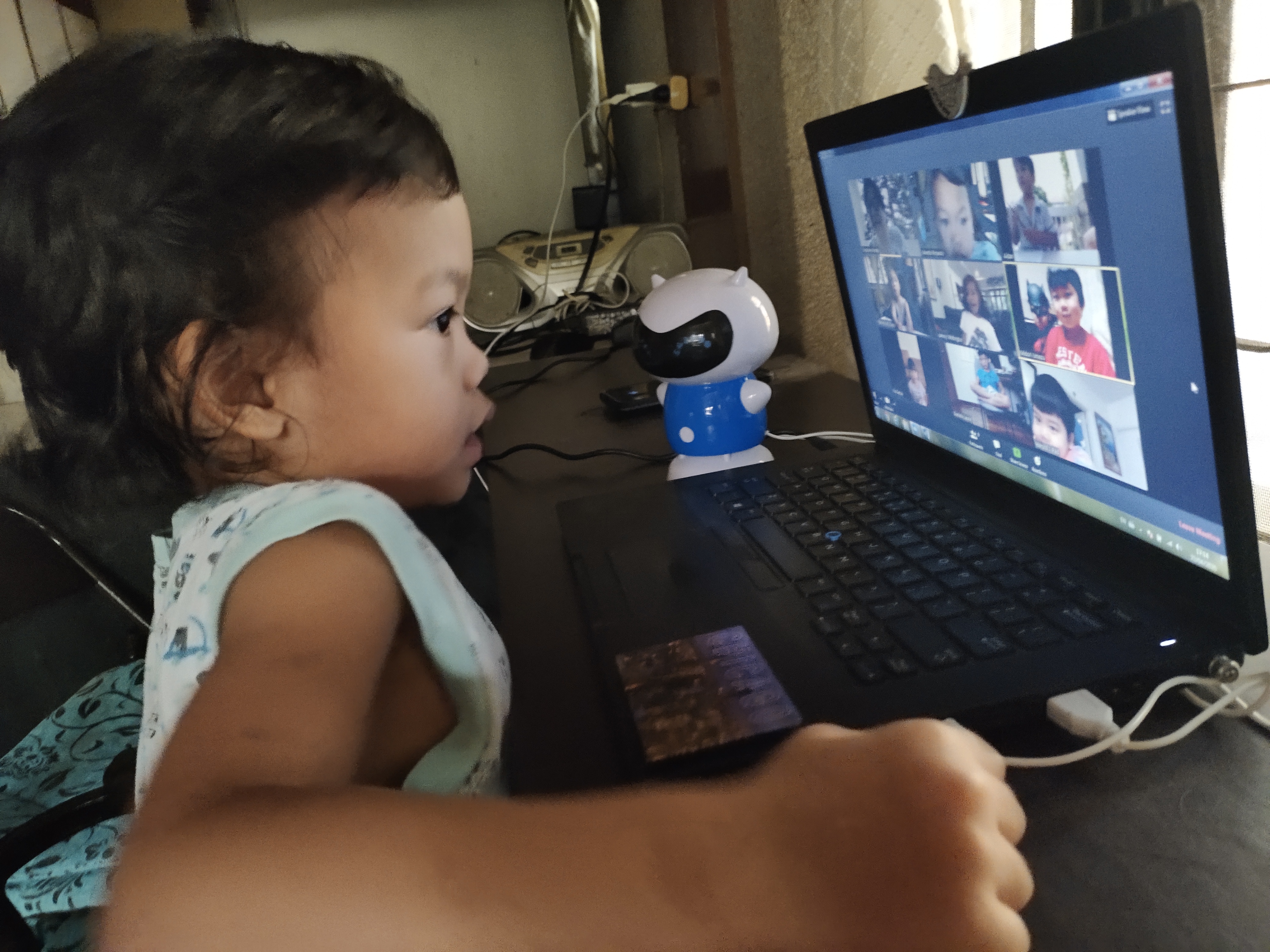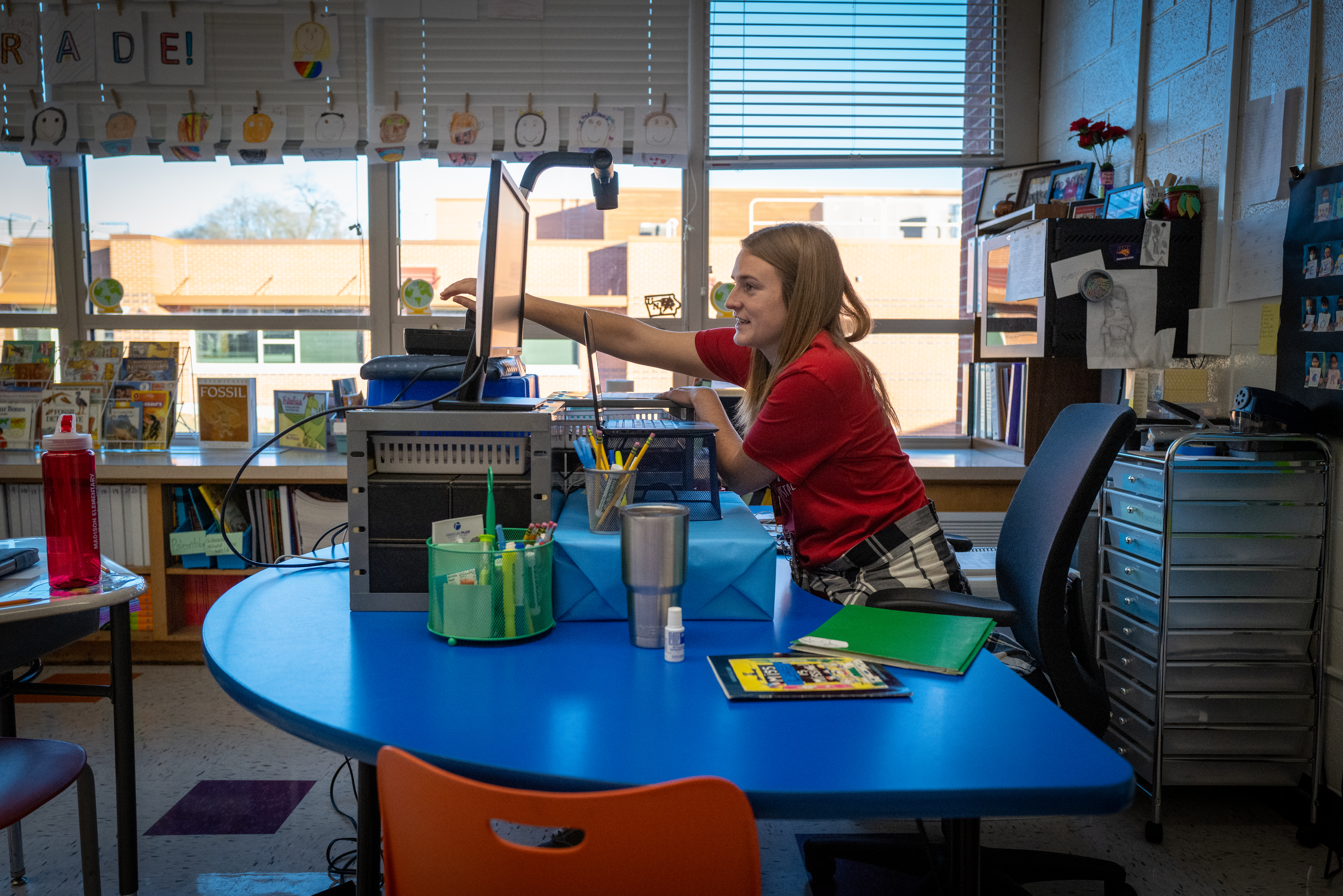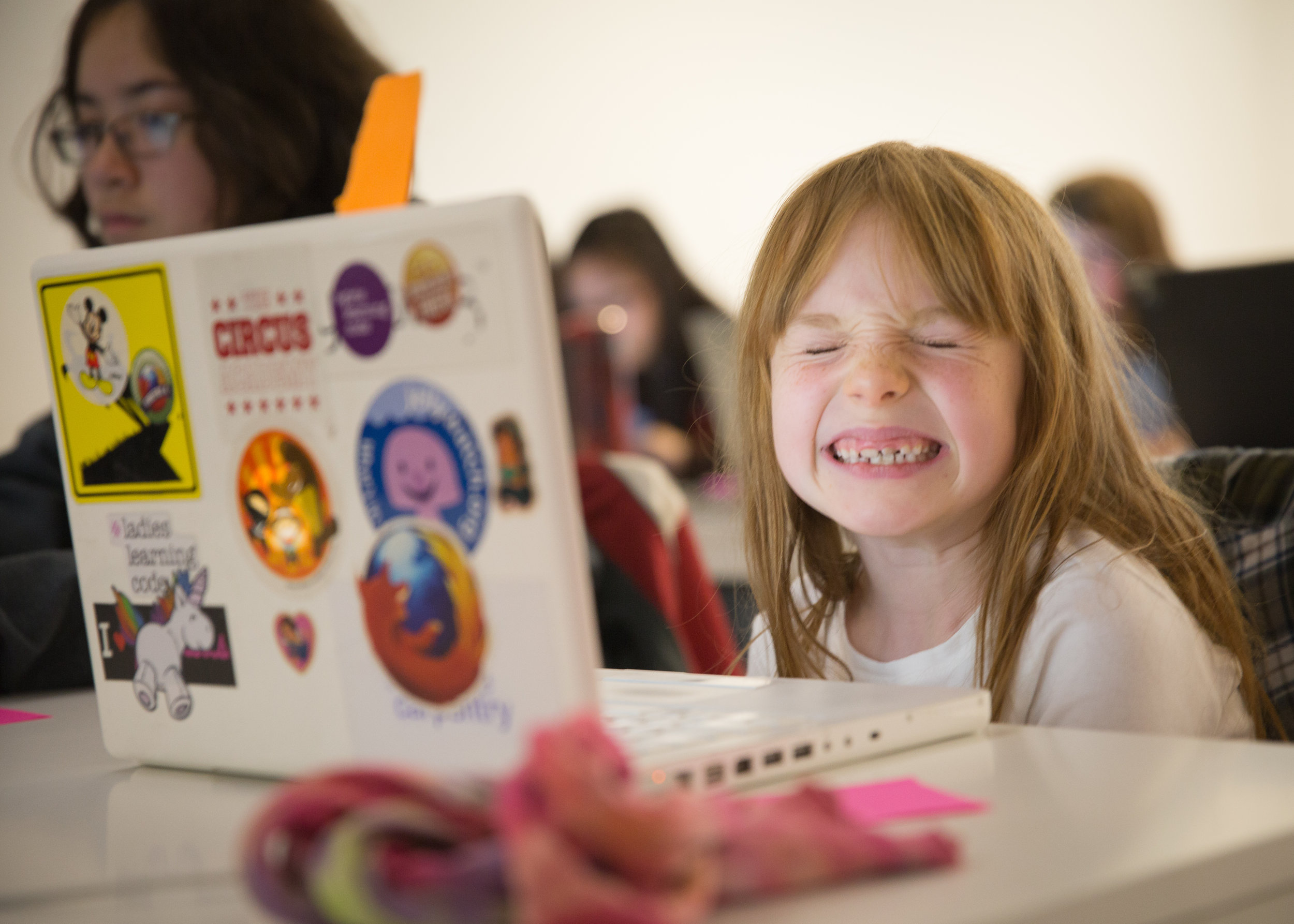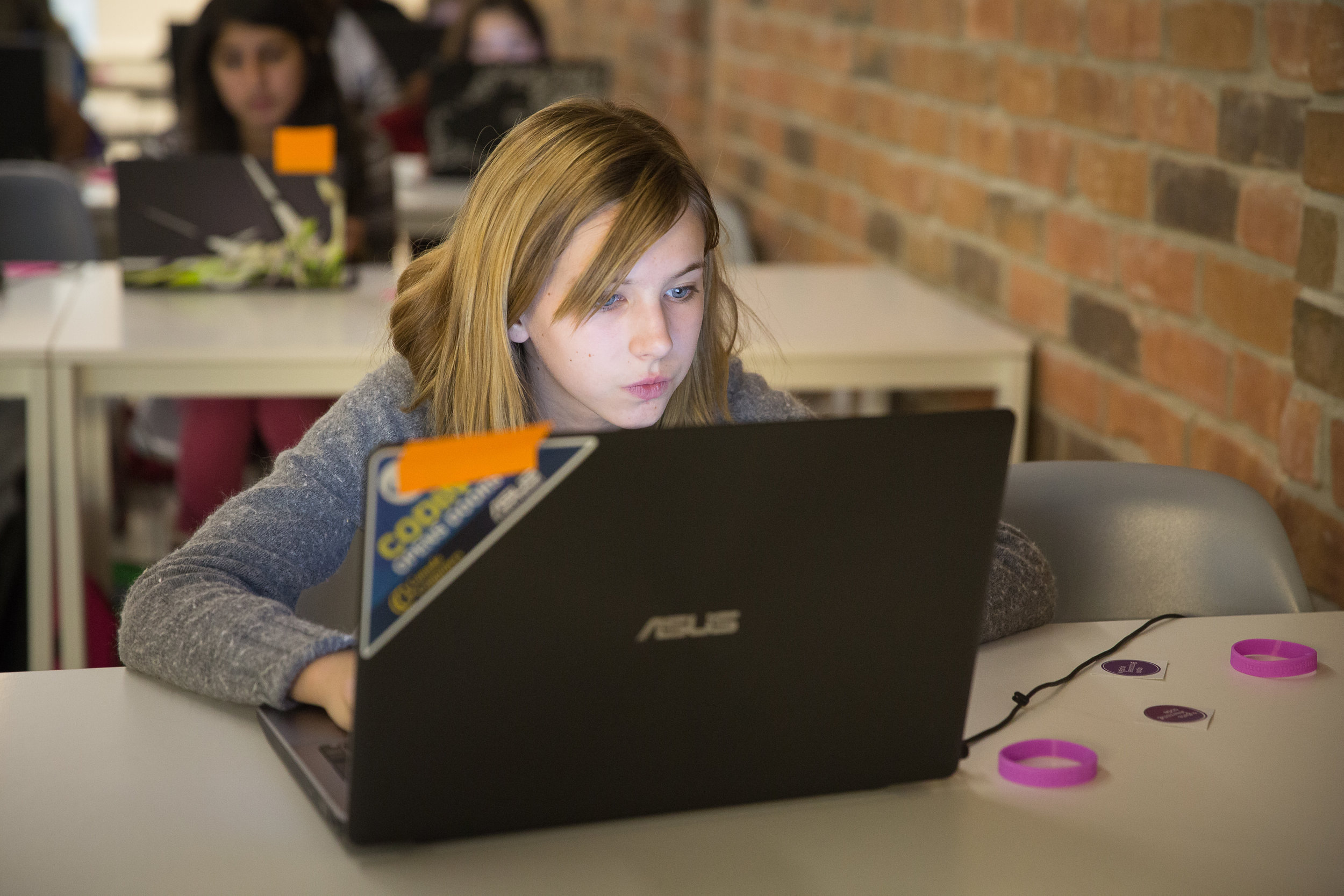Introduction
The coronavirus pandemic of 2020 brought the biggest disruption to K-12 public schools in this century. It thrust teachers, parents, and administrators into a chaotic process of finding ways to ensure that children received a quality education while simultaneously protecting the health of everyone involved. In many cases, the advances of digital learning in education over the preceding decade doubled in the months or even weeks following the beginning of the pandemic.
However, the rapid adoption of digital learning resulted in a rollout that was haphazard and chaotic. Most studies exploring this topic conclude that the remote learning measures embraced during the pandemic were not as effective as standard classroom practices. Nonetheless, this does not mean that digital learning should simply be abandoned. Under more controlled and narrowly implemented circumstances, online schools have shown that carefully prepared and planned digital learning can be as effective as classroom learning. Further, digital learning is not restricted to remote learning – it can be successfully utilized in the classroom as well.
This report explores the pandemic era implementation of digital learning, highlights many of the problems identified during the process, and identifies potential benefits of digital learning going forward. It presents a broad survey of issues to help those outside the educational system understand the effects of the pandemic. The report offers policy options which are informed by pandemic era insights.
Hightlights From this Report
- The pandemic forced the implementation of digital learning in K- 12 education far beyond what people thought possible in such a short time. This initial thrust provides a solid foundation for further efforts to embed digital education in traditional educational environments.
- The pandemic-inspired digital rollout was problematic and had sub-optimal educational outcomes. However, a more carefully planned and integrated rollout of digital learning will likely result in outcomes more comparable to the level of in-person teaching.
- Teachers with classroom experience struggled to recreate the same environment online. In-person teaching and online teaching share many of the same principles, but the application can differ. It would be presumptuous to assume teachers could shift to online learning without additional support such as professional development.
- Schools provide more services than just education. Additional effort may be needed to ensure those support services meet the needs of students studying remotely.

Digital Learning Defined
There are numerous styles of digital learning, many of which overlap while some can be employed simultaneously. This report primarily references remote learning, synchronous learning, asynchronous learning, hybrid or blended learning, and digital learning in the classroom.
Remote Learning
At its simplest, remote or distance learning is when schools conduct learning experiences outside the physical confines of a school. This can include digital learning. Some schools provided remote learning opportunities during the coronavirus pandemic period but did so primarily by providing paper packets for students to complete. That said, during the pandemic most institutions engaging in remote learning offered some digital elements to their instruction.
Synchronous Learning
In this method, lessons are undertaken at a specific time and usually allow for real-time student-teacher and student-student interaction. A common example of synchronous learning during the pandemic took place as teachers continued to hold their standard classes at regular or set time periods via Zoom, Teams, or another similar video call applications.
Asynchronous Learning
In this method, lessons are recorded so that students can participate in them or other assignments whenever they prefer. Asynchronous learning provides higher flexibility as to when lessons take place and as to how long lessons and assignments might take to complete. A common example is a lesson or lecture recorded and posted on Canvas or YouTube for students to watch whenever doing so might be most convenient. Depending on the style of the class, asynchronous learning may continue to have periodic deadlines at which the assigned work must be completed or may allow students complete the entire course at their own pace.
Hybrid or Blended Learning
There are several ways to combine remote and in-class learning. The definitions for hybrid and blended learning are not universal. Often, different people or groups will use these terms interchangeably. One definition of a hybrid approach might have some classes taught exclusively online – either synchronously or asynchronously – while other classes are taught exclusively in person. A blended approach might require in-class learning, but have elements of the course that are online, such as discussion boards and supplemental teaching. Another blended approach provides flexibility for students by allowing them to learn online in lieu of being on the school campus every day.1 During the pandemic, some schools allowed courses to be held in person for vaccinated and healthy students but simultaneously online for students who had not been vaccinated, for those students who had been vaccinated but had been exposed or had fallen ill with COVID-19, or those who had health concerns regarding in-person classes.
Students Using iPads, Credit: Flicker User ‘coreeducation’ under license (CC BY-NC-ND 2.0)
Digital Learning in the Classroom
Just as not all remote learning is digital learning, not all digital learning needs to be remote. Efforts to embed digital learning components in the classroom have existed long before the coronavirus pandemic encouraged remote learning. Teachers often employ digital devices to bring unique experiences into the classroom. At its simplest, this may amount to playing a video of Bill Nye the Science Guy in class while allowing students to digitally participate in unique experiments which involve tools not immediately available to schools. More advanced techniques could involve gamified lessons which encourage higher levels of student interactivity and engagement. Still other methods might take advantage of lessons or quizzes that are adaptive in nature and move forward only once students have mastered concepts. These methods might provide several different paths to allow student mastery of the concept in question.
Digital Learning In Utah
Utah offered digital learning opportunities well before the pandemic. The Statewide Online Education Program allows Utah students to earn middle school and high school credit through publicly funded online courses. The state had more than 6,000 students in the program before the pandemic – which increased to 24,036 students by the fall of 2022.2 While some of these programs are associated with a traditional school district, they often serve students all over the state. There are six participating providers to this program:
- Juab School District hosts the Arizona State University Prep online high school.
- Canyons Online was built to primarily serve students in the Canyons School District.
- Washington County School District hosts the Utah Online School.
- Leadership Academy of Utah, Mountain Heights Academy, and Utah Virtual Academy are online charter schools.3
A 2016 bill created a grant for Utah’s Digital Teaching and Learning Program, an initiative that began in 2012.4 This grant helped schools invest $65 million in digital learning over the four years immediately preceding the pandemic. In the 2018-19 school year, 619 of about 950 schools had already elected to participate in the program. By the spring of 2020, that number had increased to 730. Participating schools were spread across all of Utah’s school districts.5
Some claim that the program successfully put Utah ahead of the curve when the pandemic began.6 In fact, survey responses from 2020 showed that over 91% of all Utah district and school-level administrators believed that the Digital Teaching and Learning Program played either a significant or very significant role in Utah educational system’s “preparation for the online learning required by the school closures due to COVID-19.”7 Similarly, three-quarters of teachers involved in the Digital Teaching and Learning Program reported that they were prepared or fully prepared in terms of “access to the learning applications necessary to continue teaching students during the pandemic.”8 Nearly two-thirds of teachers reported that they were prepared or fully prepared for the use of “videoconferencing applications that enabled teachers to connect with students at home.”9 Finally, two-thirds of teachers reported they were prepared or fully prepared in terms of the “general professional knowledge and competencies that enables them to be successful with online learning during Covid related closures.”10 In contrast, a 2020 national survey of teachers revealed that 57% did not feel prepared to facilitate remote learning.11
The survey of Utah schools reported that the two of the three biggest challenges to successful implementation of digital learning strategies were “the lack of work time for teachers to design valuable digital experiences for students” and “the steep learning curve for teachers regarding digital learning.”12 Further, teachers noted that the insufficient “time to train all faculty on schoolwide applications and platforms” was the fourth biggest challenge.13
Teachers faced overwhelming challenges in rolling out a digital ciriculum with the onset of the 2020 pandemic.
Figure 1: Share of Respondents Reporting Challenge Among the Top Five, 2020
Source:Utah Digital Teaching and Learning Grant Program.
How Teaching changed during the pandemic
A national survey of teachers and principals reported that in the 2020 school year, 77% of public schools reported changing classes to a remote learning format with online resources while 41% reported changing to a remote learning format with paper materials. Some schools did both. Primary school levels were much more likely to report relying upon paper materials – 47% compared to 30% of middle and high schools.14
When teachers were asked about their interactions with students, 13% of teachers reported no real-time interactions with students during the height of the pandemic. The remaining 87% reached out in at least one of these ways:
- Real-time classes through a video or audio call.
- Scheduled group sessions through a video or audio call.
- Scheduled office hours through a video or audio call.15
While 87% of teachers had some real-time interactions with their students, there was limited participation from students. Only 32% of teachers reported interacting with more than 75% of their students and only 50% of teachers reported interacting with more than half of their students. Real-time interaction was more prevalent among primary level schools with 37% of primary level teachers reporting real-time interactions with at least 75% of their students compared to about 27% of middle and high school teachers.16
When principals were asked whether they had the support and resources needed during the coronavirus pandemic, 74% agreed.17 When teachers were asked, only 61% agreed.18
During the pandemic, the share of digital devices available to students increased substantially. Before the pandemic, 23% of principals reported that their school had devices that the students were allowed to take home. Another 26% allowed devices to be used in school only. During the pandemic, 45% of principals reported their schools provided digital devices to all students to take home and another 39% of schools distributed digital devices to students who did not have access to one at home. Only 16% of principals reported that their schools did not distribute any digital devices for students to take home.19
Principals also reported increased efforts to make sure students had access to the internet. About 45% of principals reported working with internet providers to increase access. In addition, 61% of principals reported sending hotspots or similar devices home with students and 37% of principals reported offering internet access, such as availability in school parking lots or via school buses distributed throughout the community. Only 11% of principals reported not taking additional steps to increase access for their students.20
Teachers Teaching, Credit: Flicker User ‘Phil Roeder’ under license (CC BY 2.0)
Learning Outcomes changed during the pandemic
Numerous sources address the negative impact that the pandemic had upon learning outcomes.21 One study of 5.5 million students in grades three through eight over the 2020-21 academic year found that, while students improved their learning over the academic year, they improved less than they had when compared to a standard year (2018-19). Students’ improvement in math and reading was far lower than would have been expected.22 A greater proportion of the shortfall in improvement occurred over the latter half of the year highlighting the increasing stress of the pandemic over time.23
Several studies also highlighted how digital learning more negatively affected lower income students, students of color, rural students, and tribal communities.24 Other studies suggested that the problem was not that remote learning is itself more likely to lead to poorer outcomes, but that the support structure available to vulnerable individuals was also disrupted: academic engagement and achievement, strong relationships with caring adults, and supportive home environments.25
DoDEA Schools Move Online, DVIDS.
The appearance of U.S. Department of Defense (DoD) visual information does not imply or constitute DoD endorsement.
As noted, Utahns’ access to digital learning resources increased during the pandemic. Both access to the internet and the availability of devices improved, yet there were still racial, educational, and income divides.26
Initially during the pandemic, students in Utah households with a white head of household were more likely to move to a remote learning format. By December of 2021, that trend had somewhat reversed.27 From April to December, the share of children in high-income households participating in remote learning decreased while the share of children in low-income households participating in remote learning increased.28
Students also found their college admission plans impacted by the pandemic. The national share of seniors taking the SAT in 2021 was 70% of the number of seniors taking the SAT in each of the previous two years.29 The share of Utah high school graduates taking the ACT in 2021 was 86% of previous years.30
That said, students did not necessarily view the pandemic school year as a waste. This is illustrated by the results of a 2021 Utah State Board of Education survey of more than 150,000 Utah students between third and tenth grade. As part of the 2021 annual end-of-year testing, 38% of these students reported that they felt they learned about the same amount when compared to a normal school year. About 28% reported that they felt like they had learned more and 35% reported they felt like they had learned less. Interestingly, students who attended in person classes three times or fewer per week were 10% more likely to report they had learned more rather than less compared to students who attended four times per week. They were also 18% more likely to report they had learned more rather than less compared to students who attended five times per week in person. Urban students were 8% more likely to report they had learned more rather than less compared to rural students. Students in standard school districts were 19% more likely to report that they had learned more rather than less compared to students in charter school districts. Each of these results might inform policy as it pertains to digital learning in general – outside an emergency context.
|
One possible silver lining of a global pandemic is that a huge and diverse set of policy responses take place with simultaneity but under a diverse set of socio-economic and cultural conditions. Such responses might provide insight into how to approach digital education even outside the sphere of a global epidemiological event. For example, Mexico built upon its long-standing TV education network – Telesecundaria – to create audiovisual content across a TV network and streamed on the internet. Further, assessment questions were made available online or delivered in print to lower-income areas with no intent access. The Brazilian government initiated a state program specifically targeting parents by developing a family engagement curriculum. This offered concrete suggestions to encourage learning by young children during daily routines and household tasks. In Colombia, the government created a cellphone-based learning platform and published a decree requesting that mobile operators provide zero-cost voice and data access to specific education services and websites. Many programs, such as those in India, New Zealand, and Japan, also offered a strong focus upon socio-emotional skills thus helping to ensure that students’ possible anxieties relating to the pandemic were addressed. Countries implemented policies that were unique to their set of logistical and financial constraints while also focusing upon societal priorities that had been set under rather difficult circumstances. The current value of looking at pandemic-related responses is in finding approaches to digital education that are multifaceted and that can perhaps be more effectively implemented under less urgent circumstances.31 |
The Pinch Points of Pandemic Propagated Digital Learning
Emergency measures meant schools had to quickly deploy digital learning methods with which teachers and administrators often had little experience. As a result, there were common problems and concerns regarding the implementation. Schools attempted to address these problems in different and sometimes ad hoc ways. This section reviews a list of the most substantial issues and how schools reportedly addressed them. The issues detailed in this report are related to digital access, student and parental engagement, teaching and teacher issues, a loss of student support structures, and digital privacy.
Access Issues
Without a doubt, the most common problem for students and teachers during the pandemic was one of access. This problem came in two forms. Students were often lacking access to a robust internet connection and/or lacking access to a digital device.
Access to Robust Internet Connections. The “digital divide” has been a topic of discussion in policy circles long before the coronavirus brought the issue to the fore. Not surprisingly, it is therefore a common theme in pandemic related research that COVID-19 did not truly cause problems in our society or economy or educational system, but merely exposed problems via their magnification. Often, even households that had access to the internet found their current service levels insufficient when trying to meet the needs of multiple children learning remotely.
Districts addressed this challenge in a number of different ways. Murray School District, for example, created a cellular network that covered their service area. Not all districts are quite so compact however, so many offered cellular hotspots to households. Other options included having Wi-Fi available in school parking lots, buses providing Wi-Fi parked in neighborhoods, and partnering with internet service providers to make reduced price or free services available to students.32 Other school district officials interviewed by Utah Foundation found that fewer than the expected number of families took advantage of the additional access resources. While the reason why was not clear, their concern was that some of the individuals and families that needed these additional resources the most were the least able to take full advantage because of a lack of familiarity with the technology or an expressed preference for paper packets over digital education.
Mobile Cellular Tower in Salt Lake City, courtesy of Imgur
Access to Digital Devices. Broadly speaking, access to digital devices followed a similar trend. While digital devices have become increasingly common, not all devices allow for full engagement with remote learning. While a phone may be suitable for some needs, it may be insufficient or add difficulties for the completion of some assignments.33
Further, while families often had one or more digital devices in their home, sometimes they did not have enough for all students in their home to use a digital device simultaneously.
Although districts offered many different approaches to resolve internet access issues, the way schools addressed the device issue was more a matter of degree. When funds allowed, school districts issued devices to each student. There were also many cases in which a corporate donor or non-profit organization would help in securing digital devices. When funds or partners were insufficient to secure a device for all students, students without devices in the home were prioritized. As noted, some schools and districts did not offer any additional devices.
Access was a particularly significant obstacle for many rural communities across the nation which typically have less infrastructure supporting quality internet connections.34 Roughly 15% of Utah’s students live in rural communities.35 The Utah Education and Telehealth Network has been working hard to extend high quality internet connections to rural communities, but their focus is primarily upon schools and health care providers. Unfortunately, these high-quality internet services do not always extend to the homes of students – who can live more than 50 miles away from Utah Education and Telehealth Network hubs.36 Correlating with lower levels of connectivity, rural communities are also less likely to have devices readily available.37
School Bus Driving Down Rural Utah Highway, CC0
How Remote Learning Can Increase Access. While school districts were faced with the immediate tasks of increasing internet and device access under a strict deadline, there is an inherent promise in digital learning to increase access. While there is currently a divide in internet and device accessibility across rural and urban areas, creating more avenues for digital learning can help open rural parts of the state to more educational opportunities. Rural communities often have difficulties hiring teachers, finding teachers with certain specialties, and finding teachers who are able to teach multiple subjects.38 Remote education therefore has the potential to ease many of those challenges if what was learned during the pandemic can become the basis for future policy.39
Giant strides were made during the pandemic to increase accessibility for those who needed it most. Previous efforts by the Utah Education and Telehealth Network helped aid that process. Continuing to develop rural telecommunications can help students not just participate more completely in online learning, but also encourage all the other benefits of having the wealth of information and resources more readily accessible to aid their educational development.40
At the Computer, Credit: ‘Lars Plougmann’, under license (CC BY-SA 2.0)
Flexibility Increases Access. In some circumstances, the flexibility allowed by digital and remote learning can increase access to educational resources. Hybrid or remote learning programs allow students to receive an education regardless of their physical location. Asynchronous methods allow students to receive an education regardless of the time of day.41
In Utah Foundation interviews with online schools, administrators reported that many students had other commitments such as competing in sports at a professional level. The flexibility offered by remote asynchronous learning allows them to both train and attend school.
Remote learning also allows flexibility in coursework scheduling. Students who have fallen behind in courses can more easily recover through asynchronous online classes.42 Some digital learning courses also allow students to focus upon courses sequentially rather than concurrently which may also benefit some students.43
Engagement Issues
There are several forms of engagement in education. Students can engage with the content being taught, with the teacher, and with other students. In addition, this section also addresses the heightened need for parental engagement during remote learning.
Teachers Teaching, Credit: Flicker User ‘Phil Roeder’ under license (CC BY 2.0)
Student Engagement. In Utah Foundation interviews with school professionals, the second most common problem with remote learning programs was engagement. When students are present and in the classroom, teachers can quickly assess who is paying attention and on task and who might need some extra consideration. This can be more difficult in online formats. Even getting people to show up to remote classes was more difficult. One major Utah school district reported 85-90% attendance during in-person classes but only 50-60% attendance for synchronous classes during remote-learning periods.
A lack of student attendance is not the only form of disengagement. In virtual classes through tools like Zoom and Teams, many students would turn off their cameras. Sometimes this would be necessary because of internet connection issues, but it made it more difficult to understand who was participating. Even if the camera was on and the student appeared attentive, teachers were often not able to accurately assess whether students were paying attention to the class and not actually engaging in some other tasks on the computer such as using social media, watching movies, checking their email, or browsing the web.
However, sub-standard student engagement with the educational content, engagement with their peers, and engagement with their teachers and parents are not novel problems; researchers have been discussing the difference in engagement levels for decades.44
Parent Engagement. In many ways, remote learning puts a more substantial burden of student engagement upon parents. Depending upon the age and temperament of students, parents may have to be substantially more involved in their students’ interactions. This was very evident during the pandemic. Schools and teachers applied numerous techniques to try to help keep parents especially engaged during this time, most often involving communication methods. This included regular announcements, frequent and immediate email responses, using various communication tools, building relationships through feedback, and providing a concise homework or curriculum schedule. Schools also offered tech support to parents and sought feedback from parents through surveys.45 Of course, even these valuable and productive methods of engaging parents to some degree represented a heavy burden placed upon them.
Fort Knox Teachers Thank Parents for Partnering with them to Finish the Year Well, DVIDS
The appearance of U.S. Department of Defense (DoD) visual information does not imply or constitute DoD endorsement.
Engagement via Digital Resources Rather than Digitized Resources. There is a difference between digitized resources and digital resources. A textbook provides a perfect example. A digitized textbook would merely be a PDF copy of the physical textbook. A digital textbook would have the same resources as the print version – text, images and illustrations – but also much more. A digital textbook could also present the information in additional formats such as videos and podcasts, animated images, or interactive graphs. It could also present additional resources such as a learning platform, educational software providing games or exercises, or even augmented reality.46 The additional methods of conveying information and capacity for digital interactivity have the promise of encouraging better engagement between students and their content.
Engagement Through Personalized Learning. A 2019 survey of teachers found that nearly half were optimistic about the personalized learning available through digital learning.47 In classes, teachers often teach to the average student. This can leave students who have trouble keeping up left behind and disengaged. Conversely, some students grasp concepts quickly and are ready to move forward, but the slow pace bores them. Therefore, they become disengaged. Personalized digital learning that teaches concepts at a pace the student prefers and checks for comprehension before moving on holds a great deal of potential for both student engagement and improved learning outcomes.48
Interactivity. Interactivity can be defined as engagement between teachers and students and engagement among the students themselves. Informal peer learning is a regular part of the classroom experience. Whether it is one student finishing their assignment and helping another or catching up on a lecture after momentary distraction, peer interactivity can be quite beneficial for learning. (Disruptive peers, of course, can cause the opposite effect.) Transitioning to asynchronous remote learning – or even synchronous remote learning – often loses much of the informal benefits. However, there are techniques to drive interactivity such as message boards, tools to annotate educational resources, or organizing pairs or small groups to enable synchronous interaction.49
Learning with Digital Technology, Credit: Flicker User ‘coreeducation’ under license (CC BY-NC-ND 2.0)
Additionally, there are a number of tools and practices that can help monitor and improve student engagement. School issued computers can have software that limits students’ ability to use computers for non-school purposes. Online polls can help drive engagement.50 Breaking up into smaller groups for discussions or the design of collaborative assignments can also help improve student engagement. Different types of content interaction can also help students connect with the subject matter. Examples include community-based service learning, student presentations, simulations, breakout conversations with each member offered an assigned role, and shifting from an instructor role to a moderator role providing space for student discussion.51
However, at least when speaking of a lecture format, remote learning tends to create more difficulty in driving student engagement than in-person classes. It should also be noted that many of these techniques to increase student engagement while learning remotely are not necessarily digital tools – they can be undertaken in the classroom. While practices to drive engagement in the classroom may not directly translate into practices to drive engagement online, there are a number of technological and instructional techniques that can help resolve concerns.
Teaching Issues
Cheating. There is little research exploring how remote learning increases the ability of students to cheat within the confines of K-12 education. However, several studies found higher levels of cheating among college students during remote learning experiences.52 Online schools often provide individual devices with software that governs what and when specific resources can be accessed. Further, software for monitoring remote exams exists, but these have generated privacy concerns among students and teachers alike. While software options might decrease cheating, teachers in online environments undeniably have a diminished sense of the degree to which a remote student might be academically dishonest.
Disruptions. In many ways, the concerns regarding cheating are related to the lower levels of direct supervision and a loss of control surrounding the physical learning environment. When conducting synchronous online lectures, teachers and students are subject to the background circumstances of each student involved in the lecture. These could include various distractions in the background such as television, family members, pets, and music. While learning to mute and unmute has become an essential skill for online etiquette in remote meetings, even the visual differences of backgrounds across dozens of students can present a distraction.53
Isaac Coding his Dance Party in Scratch on Code.org, Liam Watching, Credit: Flicker User ‘Alpha’ under license (CC BY-NC 2.0)
The loss of control is not just over the background environment, but also what directly occupies a student’s attention. Students could be texting outside the view of the webcam or be using phones or the learning device to watch videos, play games, browse social media, and more.54 When schools issue devices, there is often some controls over what can be accessed, but there is much that can be hidden from teachers in a remote learning environment.
Teachers’ Issues
Technical Challenges. Teachers in Utah schools exhibited a wide range of technical skills during the pandemic. Even for the most technologically adept or flexible, moving classes from an in-person format to a remote format represented a significant hurdle.55 Districts often have technical departments to help teachers, and by many reports, Utah’s Digital Teaching and Learning Program played a significant role in helping schools and teachers be prepared. However, teachers reported that a steep learning curve existed regarding digital learning in general – one of teachers’ two biggest challenges during the pandemic.56
Further, embracing different technologies and techniques simultaneously steepens that learning curve. While there are many tools to help teachers produce online content and conduct remote courses, in some ways the abundance of tools became part of the problem. For example, students and teachers may have had to work with multiple videoconferencing tools for different classes or even multiple tools for the same class where files and resources were hosted with one technical service provider, synchronous class lectures were operated with another provider, and assignments had to be submitted with a third provider within the same class. Account creation and management adds additional burdens.
Burnout. The pandemic put the spotlight on teachers. This highlighted the essential role they play in today’s society. The spotlight also highlighted the challenges of being a teacher more generally. A survey of undergraduates in 2021 reported that 35% of prospective teachers were less likely to pursue teaching as a career while only 12% were more likely (over half were unchanged in opinion).57
Many surveys also found increased levels of stress and burnout during the pandemic, although not all of the additional stress was related to digital or remote learning. Managing the return to school and the classroom with extra health precautions and the higher health risks were also major factors to higher stress levels. National data show that an average of 50% of those leaving the education sector quit of their own accord prior to 2020 while 63% quit of their own accord after 2020.58
Teachers Teaching, Credit: Flicker User ‘Phil Roeder’ under license (CC BY 2.0)
That said, teacher burnout seems less likely to be a long-term problem. Research looking at burnout rates comparing online teachers to face-to-face teachers before the pandemic is somewhat limited. However, one report found no difference between teaching modalities, while another found online teachers to be less stressed than their counterparts.59 This may be because teachers in online-by-design classes tend to structure their work differently. In-person teachers often focus with lectures and class discussion in large groups. Online-by-design classes often focus upon smaller groups or individuals. The different structure of online-by-design courses may reduce burnout compared to the pandemic response of moving classes online while maintaining as much of the structure of in-person classes intact.60
Loss of Support Structures
The primary role of schools is to provide student education. Schools also provide secondary roles for students, such as essential nutrition, health screenings, mental health services, and academic counseling. The difficulties schools faced in maintaining these support structures during the pandemic can help show how these services might be provided digitally or in a remote learning environment.
Missouri National Guard Delivers School Lunches in Districts Across the State, DVIDS
The appearance of U.S. Department of Defense (DoD) visual information does not imply or constitute DoD endorsement.
School Lunches. One of these support structures is food. In the 2021-22 school year, over 115,000 Utah students ate breakfast at school daily. More than three times as many, 358,000 Utah students, had lunch provided by their school.61 School districts took many efforts to help ensure that students who relied upon these meals the most had access to food through sack lunches, grab-n-go programs, or had meals distributed via community partners.62
Covid-19 interrupted healthcare services at Utah schools.
Figure 2: Number of School-Related Healthcare Services, 2016-2023 (on logarithmic axis)
Source: Utah Department of Health and Human Services.
Health Screenings. Many schools offer healthcare screenings. Utah schools are required to offer screening services for vision, hearing, dental, and abnormal spinal curvature to their students.63 One study estimated that more than three million students missed vision screening during the 2020-21 academic school year.64 In the five years prior to the pandemic, Utah schools screened 300,000 students annually for vision – roughly 45% of the student body. Among those, an average of 5,700 students received vision treatment annually. In the 2020-21 school year, that dropped by roughly 75% to 66,125 students screened and 1,414 who received treatment.65 Similarly, dental screenings dropped by three-quarters and school-sponsored dental restorative services dropped by two-thirds.66
While many of these students may have been redirected to needed professionals in subsequent years, the above highlights one way in which remote learning can neglect key services provided by schools. Utah’s current vision screening policy simply recommends that for online schools, all students be referred to an eye care professional for a complete exam.67
Mental Health Services. Schools also provide mental health services. Concerns about students’ mental health were heightened due to the additional stresses of the pandemic as well as potential grief for family or friends who died from the virus. In a national survey, counselors reported obstacles from trying to provide counseling remotely. Remote learning provided less access to students with fewer opportunities to interact with students. Counselors also highlighted the difficulty in developing relationships of trust in a remote environment. It also introduced challenges regarding confidentiality with parents that did not want counseling services for their children or who were overly involved in the sessions, sometimes listening offscreen. While some students and counselors tried to address sensitive topics via texting or chat features, others felt uncomfortable with having such potentially sensitive discussions outside of a face-to-face interaction.68
Academic Counseling. Beyond offering mental health services, school counselors can also help keep students on track academically. One administrator pointed out that a method of support that felt lacking during the pandemic was the ability to pull students aside when administrators noticed students were struggling across several classes, chat with them about what was going on, and provide additional support. Remote learning essentially created an additional scheduling hurdle that was not as present when counselors were previously able to have informal meetings between or even during classes.69
While coordination may present additional challenges, Washington County School District has shown that targeted programs can help overcome barriers. The district started a “mentor” program in which mentors function as academic counselors to help keep track of the progress of online and hybrid students, offering added support as needed to help ensure academic success.70
Digital Privacy Risks
As schools evaluate what digital technology they use in education systems, they assess several factors. One of those is privacy. Schools are concerned about how much information a platform collects about its users and how the platform uses that data. In the rush to provide remote digital education, that may be something that schools and individual teachers overlooked.71 Additional privacy concerns can arise, such as open access to other’s work, collaborative evaluations of student work, and public or critical comments regarding student work.72
Online and Home-Based Learning, Credit: Flicker User ‘ILO Asia-Pacific’ under license (CC BY-NC-ND 2.0)
There also exist privacy concerns relating to a lack of control in the educational environment. In a digital environment, it is possible that non-students, such as a siblings or parents, may be present in online lectures. There are privacy concerns regarding both who may be recorded and who can access the recording. Schools should be concerned about what can be done to protect such recordings from being shared outside the population of school participants.73 While federal guidelines outline acceptable privacy practices, there is significant leeway and variability across districts and schools. Students and their families might also not agree regarding what is acceptable to share and what is unacceptable.74 Many of these questions will have to be carefully evaluated on a local level and educational providers have a responsibility to inform students and their families about such policies.
Populations Left Behind
In Utah Foundation interviews with educational administrators and teachers, a common discussion surrounded who was successful and who was left behind under a remote teaching environment. Nearly all reported seeing that some students who struggled under the in-person school experience really thrived under remote learning practices. However, students that did well in-person generally did well online, while most who struggled in-person continued to struggle online.
Some students have additional educational challenges that were compounded when forced into remote learning situations. These challenges include behavioral, physical or cognitive development, social or emotional development, and chronic illnesses. English language learners might also face challenges with remote learning. Further, their were racial, ethnic, and income disparities.
Students with Disabilities
Utah requires individualized education programs to help students with qualifying disabilities receive a quality education in a form that best meets their needs.75 However, under the emergent circumstances of the pandemic, many of these students were thrust into a learning environment in which schools and teachers struggled to find the best ways to provide the accommodations outlined. Some of these students lack the independence to engage through remote learning and require additional support from parents or other providers.76 There were many recorded incidents in which teachers went to great lengths to meet students’ needs. However, the successfulness and availability of these extreme efforts varied over time and across geographies and on average, students with disabilities were left behind.
Conversely, there were instances in which the remote learning environment worked better for students with learning challenges. In some circumstances, remote learning can reduce either the distractions of the school environment or create an environment in which those with anxiety disorders may feel more comfortable participating.77
In many cases, parents took on some of the responsibilities of teachers during the pandemic’s remote learning period. In these cases, it is helpful to define the roles of parents and teachers – and how they can work together to meet student needs. Parental training and frequent home-school communication is also beneficial.78 However, not all parents have the time or ability to step into this role.
Teachers Teaching, Credit: Flicker User ‘Phil Roeder’ under license (CC BY 2.0)
English Language Learners
English language learners were a class of students that also experienced challenges during the pandemic. Teachers working with English language learners often have students work together in small groups and provide visual clues to help students understand the language and the subject at the same time. Walls can be covered with words and images as an instructional tool. Teachers initially had difficulty replicating these techniques in an online environment. Some districts purchased language learning software for student use, but this can add additional time requirements and removes the benefit of an immersive community environment.79
English language learning students are more likely to have parents and siblings with language barriers which limit family support in remote learning.80 These students often faced additional remote-learning challenges. This population was less likely to have devices in the home or good internet connectivity.81 Further, they may be somewhat more likely to have family circumstances that requires them to take a job, take care of siblings, or make it difficult to find a learning environment free of distraction in a crowded home.82 Many of these additional burdens are true even with in-person learning. However, the pandemic likely amplified disruptions in the academic progress of English language learners.83
Racial and Income Disparities
Students of color and low-income students faced a number of disparities during the pandemic. Initially, these students tended to have less access to both a quality internet connection and a digital device, although this disparity grew smaller over the initial months of the pandemic.84 In a longitudinal nationwide survey, lower-income parents also reported less access to meeting with and receiving feedback from teachers – although this disparity also improved over time. Lower income parents also reported less confidence in their ability to help children with their schoolwork. This national study also found similar disparities between Black students and their white counterparts. However, the data are less clear regarding Hispanic and Latino students which make up a much larger share of Utah’s students of color.85
Specifically, a report looking at learning outcomes indicated that while all students learned more slowly than a typical year, the effect was more pronounced among lower income students and students of color.86 Of course, income, ethnic, and racial disparities are not new to educational access or outcomes.87 Still, the rapid rollout of remote and digital learning appears to have compounded existing disparities.88
Digital learning alone does not necessarily reinforce racial or ethnic disparities. The digital learning provider i-Ready tracked its users before, during, and after the pandemic. It identified several schools that did not see additional disparities from the pandemic and interviewed educators in these areas. They report the greatest success was among areas that eliminated technological barriers via a relentless commitment to personally reach every family throughout the remote learning experience, follow up with each family, and hold students and their parents accountable.89
Credit: ‘Canada Learning Code’ under license (CC BY 2.0)
Conclusions and policy Options
While this report focuses largely upon the digital learning experience of students, teachers, and administrators during the pandemic, it is important to note that documenting pandemic-specific issues and policies do not truly reflect the purpose of the report. From a policy perspective, it should be clear that the pandemic itself generally highlighted existing issues facing education and more specifically highlighted issues facing particular populations.
Consequently, deploying new or enhancing existing policies to rectify problems exposed by the pandemic will not only improve the educational experience, but also increase educational equity, quality, and access for all populations within the K-12 system – and even into the post-secondary education system.
The pursuit of these policies will be neither simple to administer nor inexpensive. People and governments must be willing to cover these costs in order to implement them.
Teachers are at the core of learning, whether digital or in person. Many noted during the pandemic that their time was insufficient to be trained in the technologies and methodologies necessary to yield a suitable educational experience for their students. Given that, paid professional development time could be better funded to offer present and future teachers an advantage in the digital sphere as that sphere evolves. Broadly speaking, the learning curve for teachers, administrators, and students should be made more tolerable with foresighted policy.
Perhaps the most tangible educational difficulty faced during the pandemic was the lack of access. This includes suitable internet connectivity and devices. Maintaining internet and hardware access advancements during the pandemic – and further expanding access – would increase educational equity and quality across geographical, racial, and socio-economic boundaries.
Credit: ‘Canada Learning Code’ under license (CC BY 2.0)
Student engagement as well as student/teacher/parent interactivity can be integrated into hardware, software, and best practices. Relatedly, teaching issues such as cheating on quizzes, tests, or assignments along with overcoming disruptions are integral to digital learning success.
To the degree that remote learning becomes more prevalent, additional attention may be needed so students continue to receive the additional support structures provided by schools. When education is not bound to a specific physical location, providing school breakfast and lunch programs to vulnerable populations becomes more complex. The same can also be said for health screenings. Further, in-person schools are presently places in which mental health can be evaluated, possible patterns of abuse and neglect can be detected, and where professional or personal counseling takes place. In either a blended or purely online system of education, policies regarding privacy and the mode of delivery for these services should be carefully considered to avoid leaving behind important non-educational services.
Research into digital learning has been around since 1996.90 Many of the issues highlighted in this report have been around since then. As one might suspect, there has also been substantial research over the subsequent decades on how to resolve those issues. Whole books have been written on the topic.91 This report briefly mentions some of those solutions. The pandemic, however, did not allow for teachers and administrators to carefully consult the existing handbooks, learn the new skills for a different method of teaching, and fully implement best practices.92 The resulting effort was chaotic, but it represented the best administrators and teachers could do under the circumstances. Many have concluded based on the experiment that in-person learning is inherently, and always will be substandard to digital learning.93 However, it should be recognized that successful online teaching and online learning does not directly translate from in-person teaching and learning. It requires similar principles, but with different applications.
There are several useful lessons we can take away from the pandemic experiment with digital learning. Perhaps the most pervasive is that individuals, organizations, and societies can truly do a lot more digitally – both in schools and in every other sector – than ever expected. But it took the pandemic to overcome the initial hurdles of acquiring the technology, learning how to use it, and developing new habits. Some may argue, based on the pandemic experience alone, that digital learning is a failure. It may be the case that the majority of students learn better in in-person school environments. However, it may be the case that additional training and improved techniques could make digital learning a better learning environment than in-person classes for a majority of students. Certainly, there is not likely to be one solution that fits all learners.
1 The Foundation for Blended and Online Learning, 2017, “Why do students choose blended and online schools? The “end of average” requires personalized learning environments,” The Foundation for Blended and Online Learning and Evergreen Education Group, https://files.eric.ed.gov/fulltext/ED589983.pdf.
2 Digital Learning Collaborative, 2022, “Utah digital learning landscape,” https://www.digitallearningcollab.com/state-profiles/utah.
3 Utah State Board of Education, 2022, “Annual report on providers statewide online education program,” https://www.schools.utah.gov/file/d960e8f0-7072-4f82-93c3-06c4d0168289; Utah State Board of Education, 2022, “Toggle Statewide Online Education Program (SOEP) Navigation Menu Statewide Online Education Program (SOEP),” https://www.schools.utah.gov/edonline.
4 House Bill 277, Personalized Learning and Teaching Amendments, 2016 General Session, https://le.utah.gov/~2016/bills/static/hb0277.html.
5 Utah State Board of Education, 2022, “Annual report 2021,” Utah State Board of Education, https://www.schools.utah.gov/file/eeee5ada-fa4a-4598-af7f-a13c628a2062.
6 Stefanich, Logan, 2022, “Heres why Utah is in a ‘unique position’ to handle challenges that come with remote learning,” KSL.com, https://www.ksl.com/article/50330596/heres-why-utah-is-in-a-unique-position-to-handle-challenges-that-come-with-remote-learning.
7 Digital Teaching and Learning Grant Program, 2021, Utah statewide statistics (FY 2020 tab).” https://dtlutah.org/stateStats#cohort-22.
8 Ibid.
9 Digital Teaching and Learning Grant Program, 2021, Utah statewide statistics (FY 2020 tab).” https://dtlutah.org/stateStats#cohort-22.
10 Ibid.
11 Classtag, 2020, “Special report: How teachers are turning to technology amid COVID-19 school closings,” accessed through archive.org, https://web.archive.org/web/20200405234646/https://home.classtag.com/remote-report/; Newton, Derek, 2020, “Most teachers say they are ‘not prepared’ to teach online,” Forbes, https://www.forbes.com/sites/dereknewton/2020/03/26/most-teachers-say-they-are-not-prepared-to-teach-online/.
12 Digital Teaching and Learning Grant Program, 2021, Utah statewide statistics (FY 2020 tab).” https://dtlutah.org/stateStats#cohort-22.
13 Ibid.
14 Berger, Mark, Ming Kuang, Laura Jerry, and David Freund, 2022, “Impact of the Coronavirus (COVID-19) pandemic on public and private elementary and secondary education in the United States (preliminary data): Results from the 2020-21 National Teacher and Principal Survey (NTPS),” Table A-1, National Center for Education Statistics, https://nces.ed.gov/pubsearch/pubsinfo.asp?pubid=2022019.
15 Ibid. Table A-5.
16 Berger, Mark, Ming Kuang, Laura Jerry, and David Freund, 2022, “Impact of the Coronavirus (COVID-19) pandemic on public and private elementary and secondary education in the United States (preliminary data): Results from the 2020-21 National Teacher and Principal Survey (NTPS),” Table A-7, National Center for Education Statistics, https://nces.ed.gov/pubsearch/pubsinfo.asp?pubid=2022019.
17 Ibid. Table A-9.
18 Ibid. Table A-11.
19 Ibid. Table A-13.
20 Ibid. Table A-15.
21 A Netherlands study reported that little or no progress was made during remote learning periods. Engzell, Per, Arun Frey and Mark Verhagen, 2021, “Learning loss due to school closures during the COVID-19 pandemic,” Proceedings of the National Academy of Sciences, https://doi.org/10.1073/pnas.2022376118. A report by the Federal Reserve Bank of San Francisco estimates the disruption will have a lasting negative effect with fewer graduates and lower lifetime earnings. Fernald, John, Huiyu Li and Mitchell Ochse, 2021, “Future output loss from COVID-induced school closures.” Federal Reserve Bank of San Francisco, https://www.frbsf.org/economic-research/publications/economic-letter/2021/february/future-output-loss-from-covid-induced-school-closures/. An international survey of teachers across eight countries carried out by the consulting firm McKinsey reported that the remote learning rollout during the pandemic scored a 5 of 10 in terms of learning effectiveness. Teachers in Japan and the United States averaged lower – 60% of teachers reported the effectiveness of remote learning between one and three out of ten. Chen, Li-Kai, Emma Dorn, Jimmy Sarakatsannis, and Anna Wiesinger, 2021, “Teacher survey: Learning loss is global—and significant,” McKinsey & Company, https://www.mckinsey.com/industries/education/our-insights/teacher-survey-learning-loss-is-global-and-significant.
22 NWEA, 2021, “Learning during COVID-19: Reading and math achievement in the 2020-21 school year,” NEWA, https://www.nwea.org/uploads/2021/07/Learning-during-COVID-19-Reading-and-math-achievement-in-the-2020-2021-school-year.research-brief-1.pdf.
23 Ibid.
24 Sanders, C. K., & Scanlon, E. (2021). The digital divide is a human rights issue: Advancing social inclusion through social work advocacy. Journal of Human Rights and Social Work, Vol 6, 130-143. https://doi.org/10.1007/s41134-020-00147-9; Karyn Lewis, Megan Kuhfeld, Erik Ruzek, and Andrew McEachin, 2021, “Learning during COVID-19: Reading and math achievement in the 2020-21 school year,” NEWA, https://www.nwea.org/uploads/2021/07/Learning-during-COVID-19-Reading-and-math-achievement-in-the-2020-2021-school-year.research-brief-1.pdf; Emma Dorn, Bryan Hancock, Jimmy Sarakatsannis, and Ellen Viruleg, 2021, “COVID-19 and student learning in the United States: The hurt could last a lifetime”, McKinsey & Company, https://www.mckinsey.com/industries/education/our-insights/covid-19-and-student-learning-in-the-united-states-the-hurt-could-last-a-lifetime.
25 Emma Dorn, Bryan Hancock, Jimmy Sarakatsannis, and Ellen Viruleg, 2021, “COVID-19 and student learning in the United States: The hurt could last a lifetime”, McKinsey & Company, https://www.mckinsey.com/industries/education/our-insights/covid-19-and-student-learning-in-the-united-states-the-hurt-could-last-a-lifetime.
26 National Center for Education Statistics, 2021 “Digest of Education Statistics,” National Center for Education Statistics, Table 218.85 https://nces.ed.gov/programs/digest/d21/tables/dt21_218.85.asp; National Center for Education Statistics, 2021 “Digest of Education Statistics,” National Center for Education Statistics, Table 218.90 https://nces.ed.gov/programs/digest/d21/tables/dt21_218.90.asp.
27 National Center for Education Statistics, 2021 “Digest of Education Statistics,” National Center for Education Statistics, Table 218.80 https://nces.ed.gov/programs/digest/d21/tables/dt21_218.80.asp.
28 National Center for Education Statistics, 2021 “Digest of Education Statistics,” National Center for Education Statistics, Table 218.80 https://nces.ed.gov/programs/digest/d21/tables/dt21_218.80.asp. Note: An explanation for this may be found in general historical trend of vaccine hesitancy in non-white populations in America which kept these students online longer than those who were vaccinated. See: Shearn, Christina, and Eva M Krockow, 2023, “Reasons for COVID-19 vaccine hesitancy in ethnic minority groups: A systematic review and thematic synthesis of initial attitudes in qualitative research,” SSM. Qualitative Research in Health, https://pubmed.ncbi.nlm.nih.gov/36573229/.
29 National Center for Education Statistics, 2021 “Digest of Education Statistics,” National Center for Education Statistics, Table 226.10 https://nces.ed.gov/programs/digest/d21/tables/dt21_226.10.asp.
30 Ibid.
31 Vincent- Lancrin, S. C. Cobo Romani and F. Reimers (ed s.), 2022, “How learning continued during the COVID-19 Pandemic: Global lessons from initiatives to support learners and teachers,” OECD Publishing, https://read.oecd-ilibrary.org/education/how-learning-continued-during-the-covid-19-pandemic_bbeca162-en#page21.
32 Stefanich, Logan, 2021, “How one Utah school district is taking steps to address the digital divide,” KSL.com, November 21, https://www.ksl.com/article/50285890/how-one-utah-school-district-is-taking-steps-to-address-the-digital-divide.
33 That said, as noted, some governments encouraged the public to rely heavily upon phones for digital learning as this was the most efficient mode of delivery in some parts of the developing world.
34 Turner Lee, Nicol, James Seddon, Brooke Tanner and Samantha Lai, 2022, “Why the federal government needs to step up efforts to close the rural broadband divide,” The Brookings Institution, https://www.brookings.edu/articles/why-the-federal-government-needs-to-step-up-their-efforts-to-close-the-rural-broadband-divide/; The Foundation for Blended and Online Learning, 2018, “Digital learning strategies for rural America: A scan of policy and practice in K–12 education.” The Foundation for Blended and Online Learning and Evergreen Education Group, https://files.eric.ed.gov/fulltext/ED588911.pdf.
35 Utah Rural Schools Association, 2023, “Welcome,” https://utahruralschools.org/.
36 Dillon, Sam, 2004, “In rural Utah, school days start at dawn — on a bus / As districts cut back, low-income students endure longer and rougher commutes,” SFGate, https://www.sfgate.com/education/article/In-rural-Utah-school-days-start-at-dawn-on-a-2770930.php.
37 The Foundation for Blended and Online Learning, 2018, “Digital learning strategies for rural America: A scan of policy and practice in K–12 education.” The Foundation for Blended and Online Learning and Evergreen Education Group, https://files.eric.ed.gov/fulltext/ED588911.pdf.
38 Utah Rural Schools Association, 2023, “Welcome,” https://utahruralschools.org/.
39 The Foundation for Blended and Online Learning, 2018, “Digital learning strategies for rural America: A scan of policy and practice in K–12 education.” The Foundation for Blended and Online Learning and Evergreen Education Group, https://files.eric.ed.gov/fulltext/ED588911.pdf.
40 Ibid.
41 The Foundation for Blended and Online Learning, 2017, “Why do students choose blended and online schools? The “end of average” requires personalized learning environments,” The Foundation for Blended and Online Learning and Evergreen Education Group, https://files.eric.ed.gov/fulltext/ED589983.pdf
42 Ibid.
43 Ibid.
44 Phipps, R., and J. Merisotis, 1999, “What’s the difference? A review of contemporary research on the effectiveness of distance learning in higher education,” Report for The Institute for Higher Education Policy, 2-49, https://files.eric.ed.gov/fulltext/ED429524.pdf; Webster, J. and P. Hackley, 1997, “Teaching effectiveness in technology-mediated distance learning,” Academy of Management Journal, 40, 1282-1309, https://www.jstor.org/stable/257034; Spitzer, Markus Wolfgang Hermann et al, 2021, “Evaluating students’ engagement with an online learning environment during and after COVID-19 related school closures: A survival analysis approach.” Trends in Neuroscience and Education vol. 25, https://www.ncbi.nlm.nih.gov/pmc/articles/PMC8599139.
45 Kipp, Kristin and Kerry Rice, 2020, “How can educators tap into research to increase engagement during remote learning?” EdSurge News, https://www.edsurge.com/news/2020-05-06-how-can-educators-tap-into-research-to-increase-engagement-during-remote-learning.
46 Moundy, Kamal, Nadia Chafiq, and Mohammed Talbi, 2021, “Comparative Analysis of Student Engagement in Digital Textbook Use during Quarantine,” Education Sciences, https://files.eric.ed.gov/fulltext/EJ1304194.pdf.
47 Kurtz, Holly, Sterling Lloyd, Alex Harwin, Xinchun Chen, and Yuikko Furuya, 2019, “Personalized learning: Results of a national survey, EdWeek Research Center, https://epe.brightspotcdn.com/5c/f0/8e6844d94ac586c2f70399085aa9/personalized-learning-national-survey-education-week-research-center.pdf.
48 Benton, Laura, et al. 2021, “Designing for ‘challenge’ in a large-scale adaptive literacy game for primary school children,” British Journal of Educational Technology, vol. 52, no. 5, pp. 1862–80, https://doi.org/10.1111/bjet.13146; The Foundation for Blended and Online Learning, 2017, “Why do students choose blended and online schools? The “end of average” requires personalized learning environments,” The Foundation for Blended and Online Learning and Evergreen Education Group, https://files.eric.ed.gov/fulltext/ED589983.pdf; Nabulsi, Leena, Amy Nguyen and Oluwatobi Odeleye, 2021, “A comparison of the effects of two different online homework systems on levels of knowledge retention in general chemistry students.” Journal of Science Education and Technology, vol. 30, no. 1, pp. 31–39, https://doi.org/10.1007/s10956-020-09872-2; Serra, Judit, and Roger Gilabert, 2021, “Algorithmic versus teacher-led sequencing in a digital serious game and the development of second language reading fluency and accuracy.” British Journal of Educational Technology, vol. 52, no. 5, Sept. 2021, pp. 1898–916, https://bera-journals.onlinelibrary.wiley.com/doi/full/10.1111/bjet.13131; Sharim, Khitam Yousuf and Zuheir N Khlaif, 2010, “An e-learning approach to secondary education in Palestine: Opportunities and challenges,” Information Technology for Development, https://www.tandfonline.com/doi/abs/10.1080/02681102.2010.501782.
49 Johnson, Stacey M., 2020, “Interacting asynchronously,” Vanderbilt University, https://www.vanderbilt.edu/cdr/module-2/interacting-asynchronously.
50 Hartwell, Christopher J., 2017, “Engaging students in a synchronous distance setting: Asking online questions,” Journal on Empowering Teaching Excellence: Vol. 1: Iss. 1, Article 5. https://digitalcommons.usu.edu/jete/vol1/iss1/5.
51 Sebastien, Neria, 2021, “Increasing student engagement during synchronous online classes,” Faculty Focus, https://www.facultyfocus.com/articles/online-education/online-student-engagement/increasing-student-engagement-during-synchronous-online-classes/; Cunningham, Paige D. 2016, “Bridging the distance: Using interactive communication tools to make online education more social,” CORE, https://core.ac.uk/display/218486684; Center for Innovative Teaching and Learning, 2020, “Recommendations to increase student engagement in online courses” Center for Innovative Teaching and Learning, https://www.niu.edu/citl/resources/guides/increase-student-engagement-in-online-courses.shtml; Hennington, Beth, 2022, “Tips for creating an engaging asynchronous online learning environment,” Wiley University Services, https://universityservices.wiley.com/asynchronous-learning-environment-tips/; The Sheridan Center, 2020, “Asynchronous strategies for inclusive teaching,” The Sheridan Center for Teaching and Learning, Brown University, https://www.brown.edu/sheridan/asynchronous-strategies-inclusive-teaching; Center for Excellence in Learning and Teaching, 2020, “Asynchronous strategies,” Center for Excellence in Learning and Teaching, Iowa State University, https://www.celt.iastate.edu/instructional-strategies/teaching-format/asynchronous-strategies/; Dixson, Marcia D., 2015, “Measuring student engagement in the online course: The online student engagement scale (OSE),” Online Learning vol 19:4, https://files.eric.ed.gov/fulltext/EJ1079585.pdf; Meyer, Katrina. A., (2014), “Student engagement in online learning: What works and why”. ASHE Higher Education Report 40: 1-114. https://doi.org/10.1002/aehe.20018.
52 Arie, Rotem, 2021, “Academic dishonesty and COVID-19: A biological explanation,” Brandis University, https://www.brandeis.edu/writing-program/write-now/2020-2021/arie-rotem/index.html; Malik, Aamir Abbas et al., 2023 “Impact of academic cheating and perceived online learning effectiveness on academic performance during the COVID-19 pandemic among Pakistani students,” Frontiers in Psychology vol. 14 1124095. 2 Mar. 2023, doi:10.3389/fpsyg.2023.1124095, https://www.ncbi.nlm.nih.gov/pmc/articles/PMC10019462/; Jenkins, Baylee D., Jonathan M. Golding, Alexis M. Le Grand, Mary M. Levi, and Andrea M. Pals, 2023, “When opportunity knocks: College students’ cheating amid the COVID-19 pandemic,” Teaching of Psychology, 50(4), 407-419. https://doi.org/10.1177/00986283211059067.
53 Botros, Sandy, 2023, “Online learning distractions at home,” Rutgers University, https://writingctr.rutgers.edu/blog/164-online-learning-distractions-at-home; Mitra, Sinjini, and Denise Stanley, 2022, “Pandemic studies: Remote learning during Covid.” Significance (Oxford, England) vol. 19,2: 22-24. doi:10.1111/1740-9713.01630, https://www.ncbi.nlm.nih.gov/pmc/articles/PMC9111099/.
54 Botros, Sandy, 2023, “Online learning distractions at home,” Rutgers University, https://writingctr.rutgers.edu/blog/164-online-learning-distractions-at-home.
55 St-Onge, Christina, Kathleen Ouellet, Sawsen Lakhal, Tim Dube and Melanie Marceau, 2022, “COVID-19 as the tipping point for integrating e-assessment in higher education practices,” British Journal of Educational Technology, vol. 53,2 (2022): 349-366. doi:10.1111/bjet.13169, https://pubmed.ncbi.nlm.nih.gov/34898680/.
56 Digital Teaching and Learning Grant Program, 2021, Utah statewide statistics (FY 2020 tab).” https://dtlutah.org/stateStats#cohort-22.
57 Bill, Kayla, Amanda Bowsher, Betty Malen, Jennifer King Rice, and Hason E. Saltmarsh, 2022, “Making matters worse? COVID-19 and teacher recruitment.” Phi Delta Kappan, 103(6), 36-40. https://doi.org/10.1177/00317217221082808.
58 U.S. Bureau of Labor Statistics, Job Openings and Labor Turnover data series JTS923000000000000QUR and JTS923000000000000TSR.
59 McCann, Jack Thomas, and Roger Holt, 2009, “An exploration of burnout among online university professors.” Journal of Distance Education, vol. 23, no. 3, 2009, pp. 97–110. https://eric.ed.gov/?id=EJ865349; Dunbar, Scott, 2018, “Exploring the relationship of burnout, retention, an tenure between full-time professors teaching in a traditional brick-and-mortar environment and full-time professors teaching in a fully online environment,” Liberty University, https://digitalcommons.liberty.edu/doctoral/1647/.
60 The Foundation for Blended and Online Learning, 2017, “Why do students choose blended and online schools? The “end of average” requires personalized learning environments,” The Foundation for Blended and Online Learning and Evergreen Education Group, https://files.eric.ed.gov/fulltext/ED589983.pdf.
61 Hayes, Clarissa, and Crystal FitzSimons, 2023, “The reach of school breakfast and lunch during the 2021-2022 school year,” Food Research and Action Center, https://frac.org/wp-content/uploads/The-Reach-of-School-Breakfast-and-Lunch_2023_0308-1.pdf, page 11.
62 ABC4 News, 2020, “Which Utah school districts will feed students during the soft-closure?” https://www.abc4.com/coronavirus/which-utah-school-districts-will-provide-meals-to-students-during-school-closures/
63 Utah State Statute §53G-9-402 (1) (a), https://le.utah.gov/xcode/Title53G/Chapter9/53G-9-S402.html.
64 Antonio-Aguirre, Bani, Gina Emge and Megan Collins, 2023, “Missed vision screenings for school-age children during the COVID-19 Pandemic: A survey based study of NASN representatives.” The Journal of School Nursing, vol. 39,2: 156-161. doi:10.1177/10598405221117511, https://pubmed.ncbi.nlm.nih.gov/35915998/.
65 Data gathered from the Annual Reports on Nursing Services in Utah Public Schools. See https://heal.utah.gov/wp-content/uploads/2021/09/10-3-2016-SN-Annual-Report.pdf; https://heal.utah.gov/wp-content/uploads/2021/09/2017-Annual-Report-FINAL.pdf; https://heal.utah.gov/wp-content/uploads/2021/09/FINAL-2018-Annual-Report-9-20-18.pdf;https://heal.utah.gov/wp-content/uploads/2021/09/2019-Annual-Report-8-8-19.pdf; https://heal.utah.gov/wp-content/uploads/2021/07/2020-Annual-Report-8-28-20-FINAL-1.pdf; https://heal.utah.gov/wp-content/uploads/2021/09/2021-Annual-Report-7-30-21-ADA.pdf; https://heal.utah.gov/wp-content/uploads/2022/08/2022-Nursing-services-in-Utah-Public-schools-8-22-22-ADA.pdf; https://heal.utah.gov/wp-content/uploads/2023/08/Nursing-services-in-Utah-public-schools.pdf.
66 Ibid.
67 Elizabeth (BettySue) Hinkson, 2023 “Utah school vision screening policy,” Utah Department of Health & Human Services, https://heal.utah.gov/wp-content/uploads/2023/08/2023-Utah-school-vision-screening-policy.pdf.
68 ASCA Ethics Committee, 2020, “School counseling during a pandemic,” American School Counselor Association, https://www.schoolcounselor.org/Magazines/September-October-2020/School-Counseling-During-a-Pandemic.
69 Ibid.
70 Christensen Institute, 2015, “Proof points: Blended learning success in school districts” https://www.christenseninstitute.org/wp-content/uploads/2015/09/Washington-County-School-District.pdf.
71 Duball, Joseph, 2020, “Shift to online learning ignites student privacy concerns,” IAPP, https://iapp.org/news/a/shift-to-online-learning-ignites-student-privacy-concerns/.
72 Chang, Bo, 2021 “Privacy issues in online learning environment,” American Association for Adult and Continuing Education, https://eric.ed.gov/?id=ED611641.
73 Surprenant, Kala Shah, 2020, “FERPA & virtual learning during COVID-19,” United States Department of Education, https://studentprivacy.ed.gov/sites/default/files/resource_document/file/FERPAandVirtualLearning.pdf; Villasenor, John, 2020, “Why I won’t let my classes be recorded,” The Chronicle of Higher Education, https://www.chronicle.com/article/why-i-wont-let-my-classes-be-recorded/.
74 Caron, Christina, 2020, “How to protect your family’s privacy during remote learning,” The New York Times, https://www.nytimes.com/2020/08/20/parenting/online-school-privacy.html.
75 Utah State Board of Education, 2022, “Special education rules,” https://www.schools.utah.gov/file/9489d09b-5ede-462b-a135-4ee55918b431.
76 Averett, Kate Henley, 2021, “Remote learning, COVID-19, and children with disabilities,” AERA Open, vol. 7, https://doi.org/10.1177/23328584211058471.
77 Ibid.
78 Smith, Sean J., Paula J. Burdette, Greagory A. Cheatham, and Susan P. Harvey, 2016 “Parental role and support for online learning of students with disabilities: A paradigm shift,” Journal of Special Education Leadership, vol. 29, no. 2, Sept. 2016, pp. 101–12. ERIC, https://eric.ed.gov/?id=EJ1118423.
79 Esquivel, Paloma, 2021, “In California, a million English learners are at risk of intractable education loss,” Los Angeles Times, https://www.latimes.com/california/story/2021-04-04/how-covid-distance-learning-hurt-california-english-learners.
80 University of Cincinnati Online News, “Covid creates academic gab for English Languages Learners,” https://online.uc.edu/blog/covid-creates-academic-gap-for-english-language-learners/.
81 Ibid.
82 Esquivel, Paloma, 2021, “In California, a million English learners are at risk of intractable education loss,” Los Angeles Times, https://www.latimes.com/california/story/2021-04-04/how-covid-distance-learning-hurt-california-english-learners.
83 Unidos US. 2022, “Latino student success: Advancing U.S. educational progress for all,” Unidos US, https://unidosus.org/wp-content/uploads/2022/07/UnidosUS_Latino-Education_2022.pdf.
84 Haderlein, Shira K., et al., 2021, “Disparities in educational access in the time of COVID: Evidence from a nationally representative panel of American families.” AERA Open, vol. 7, https://doi.org/10.1177/23328584211041350.
85 Ibid.
86 Renaissance, 2021, “How kids are performing: Tracking the school-year impact of COVID-19 on reading and mathematics achievement,” ERIC, https://eric.ed.gov/?id=ED616758; Dorn, Emma, Bryan Hancock, Jimmy Sarakatsannis and Ellen Viruleg, 2020, “COVID-19 and learning loss—disparities grow and students need help,” McKinsey & Company, https://www.mckinsey.com/industries/public-sector/our-insights/covid-19-and-learning-loss-disparities-grow-and-students-need-help.
87 Pernetti, Michaela, 2021, “Remote learning and the widening K-12 achievement gap,” Chicago Policy Review, https://chicagopolicyreview.org/2021/05/03/remote-learning-and-the-widening-k-12-achievement-gap/.
88 Renaissance, 2021, “How kids are performing: Tracking the school-year impact of COVID-19 on reading and mathematics achievement,” ERIC, https://eric.ed.gov/?id=ED616758.
89 Curriculum Associates, 2020, “Overcoming the digital divide: Distance-learning successes during the pandemic,” Curriculum Associates, https://www.curriculumassociates.com/-/media/mainsite/files/i-ready/overcoming-the-digital-divide-research-brief-september-2020.pdf.
90 Leech, Nancy L., Sophie Gullett, Miriam Howland Cummings, and Carolyn A. Haug, 2022, “The challenges of remote K-12 education during the COVID-19 pandemic: Differences by grade level.” Online Learning 26, no. 1: 245-267, https://www.cde.state.co.us/educatortalent/remote-teaching-challenges-by-grade-level.
91 Marcus-Quinn, Ann, and Triona Hourigan, 2017, “Handbook on digital learning for K-12 schools,” https://link.springer.com/book/10.1007/978-3-319-33808-8.
92 DiPietro, Meredith, Richard E. Ferdig, Erik W. Black, and Megan Preston, 2008, “Best practices in teaching K-12 online: Lessons learned from Michigan Virtual School teachers,” Journal of Interactive Online Learning 7, no. 1: 10-35. https://www.ncolr.org/jiol/issues/pdf/7.1.2.pdf.
93 Sawchuk, Stephen, 2020, “As more schools resume in-person learning, some lessons from districts that did it first,” EducationWeek, https://www.edweek.org/leadership/as-more-schools-resume-in-person-learning-some-lessons-from-districts-that-did-it-first/2020/10; St. George, Donna, Valerie Strauss, Laura Meckler, Joe Heim, and Hannah Natanson, 2021, “How the pandemic is reshaping education,” The Washington Post, https://www.washingtonpost.com/education/2021/03/15/pandemic-school-year-changes/.


